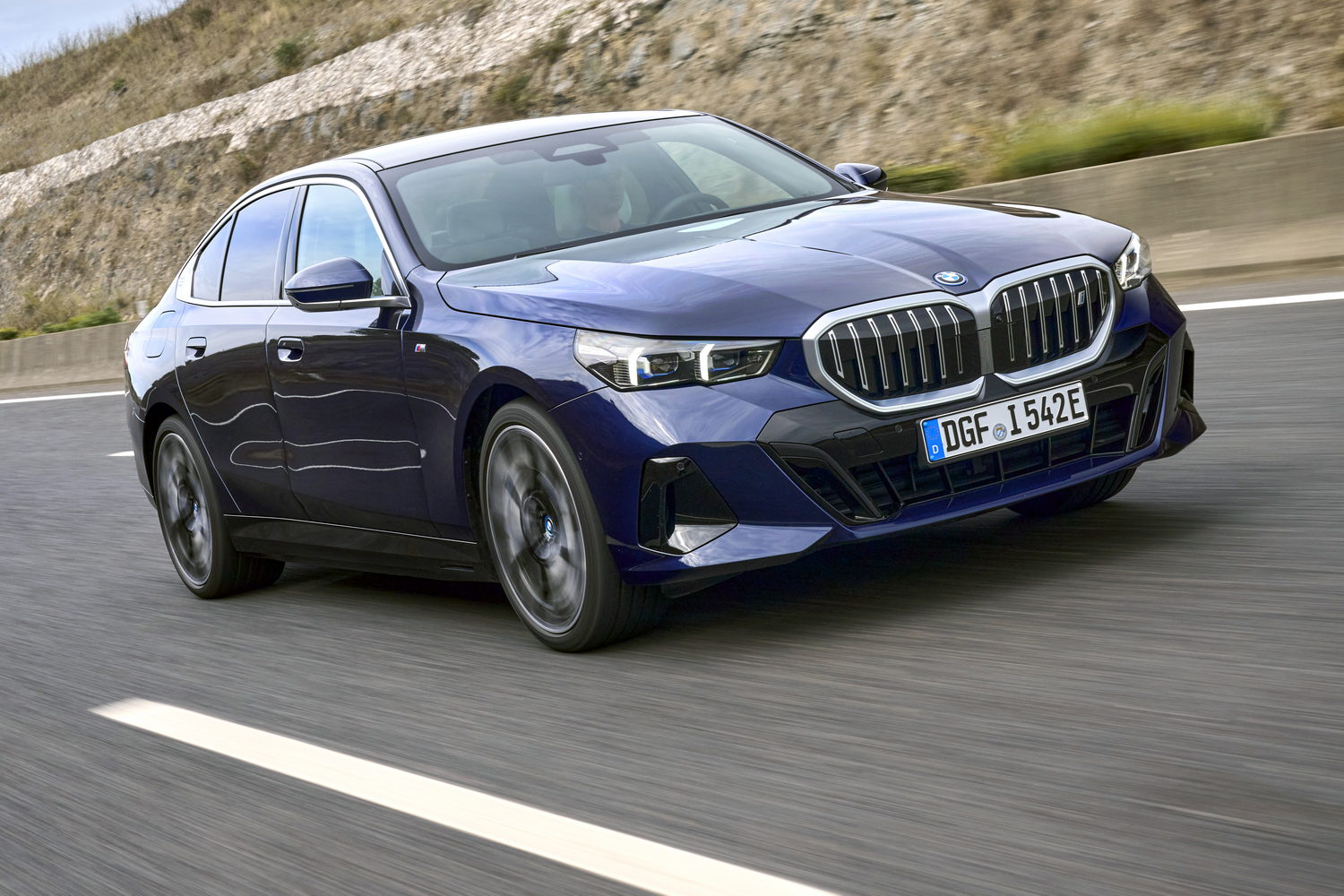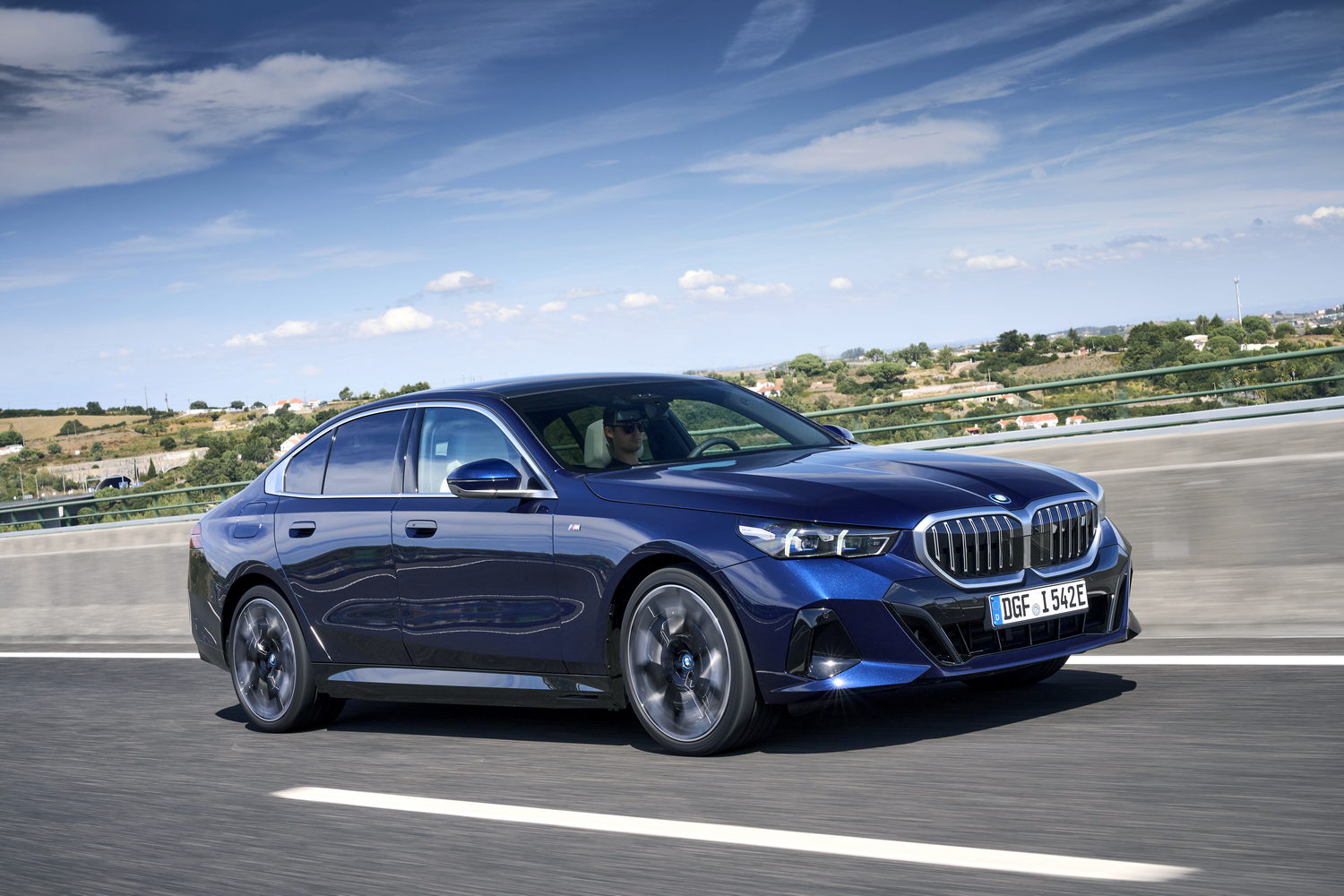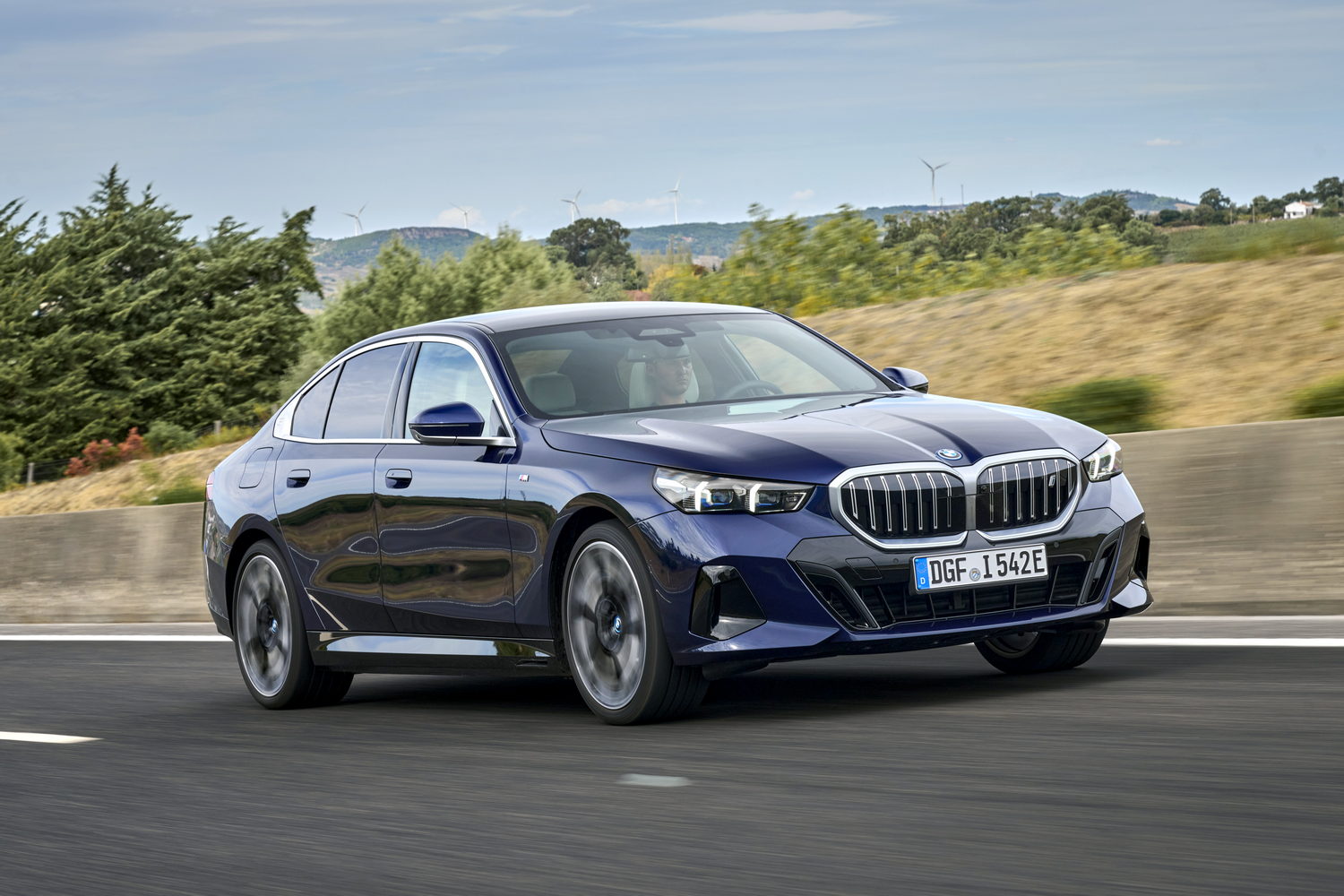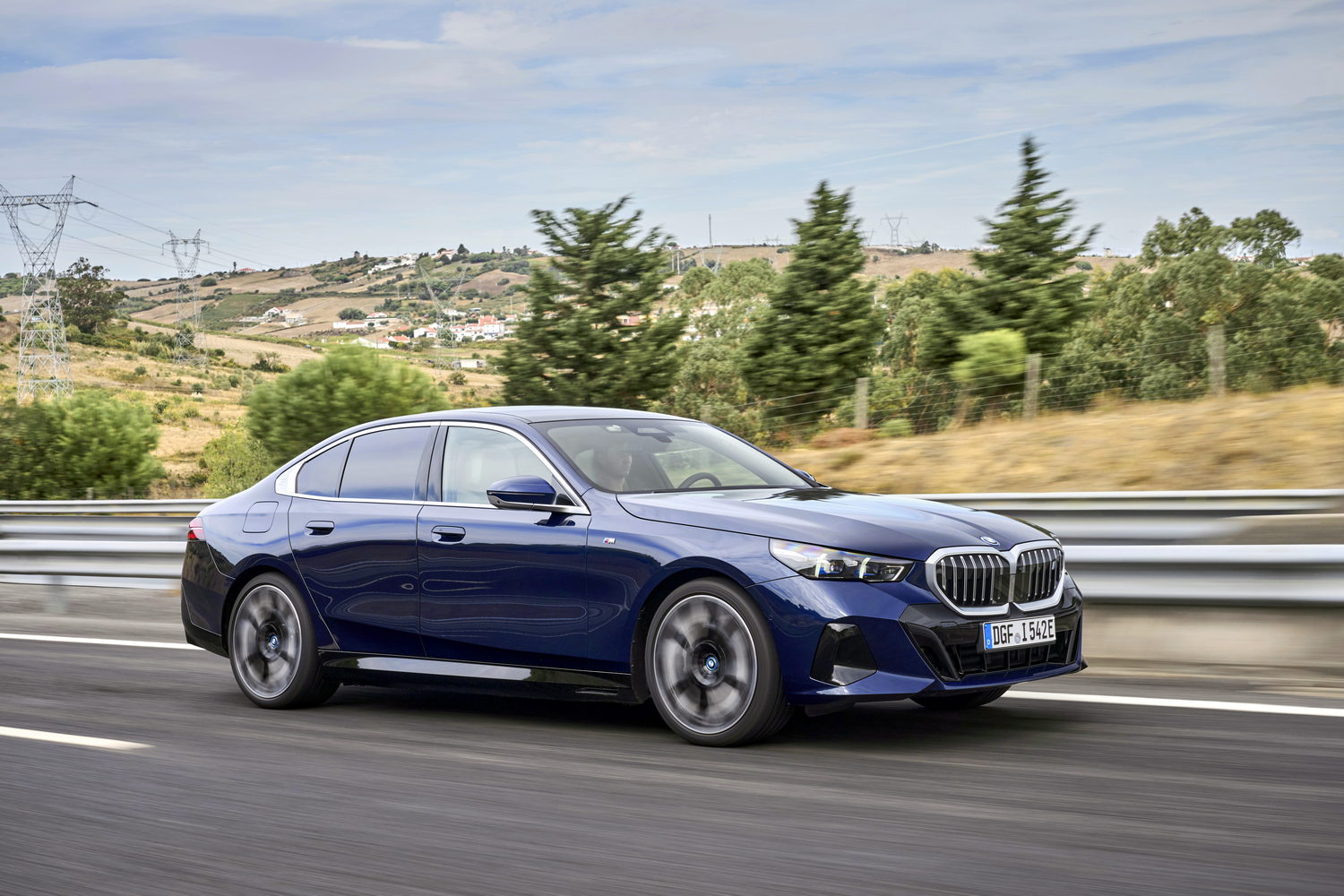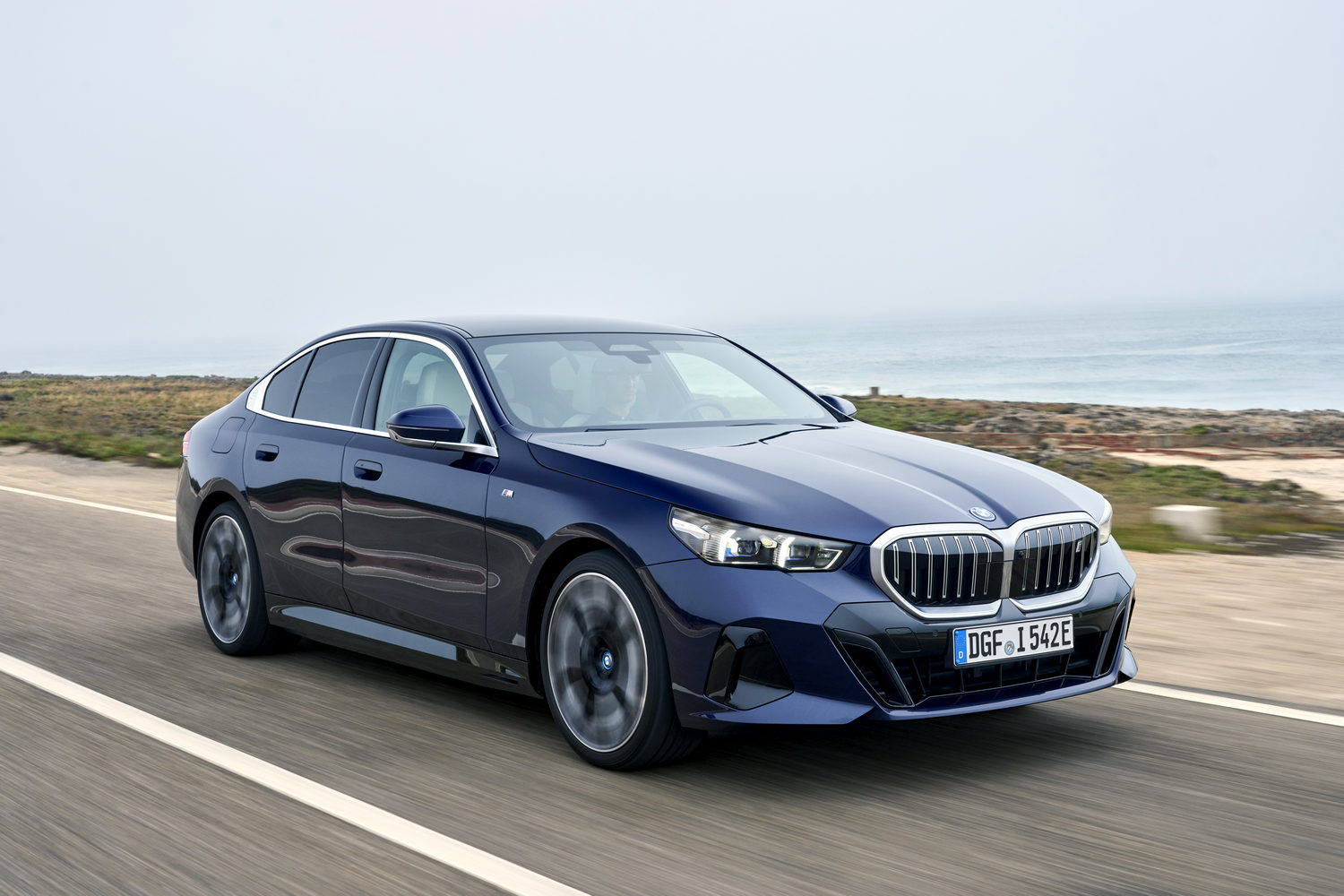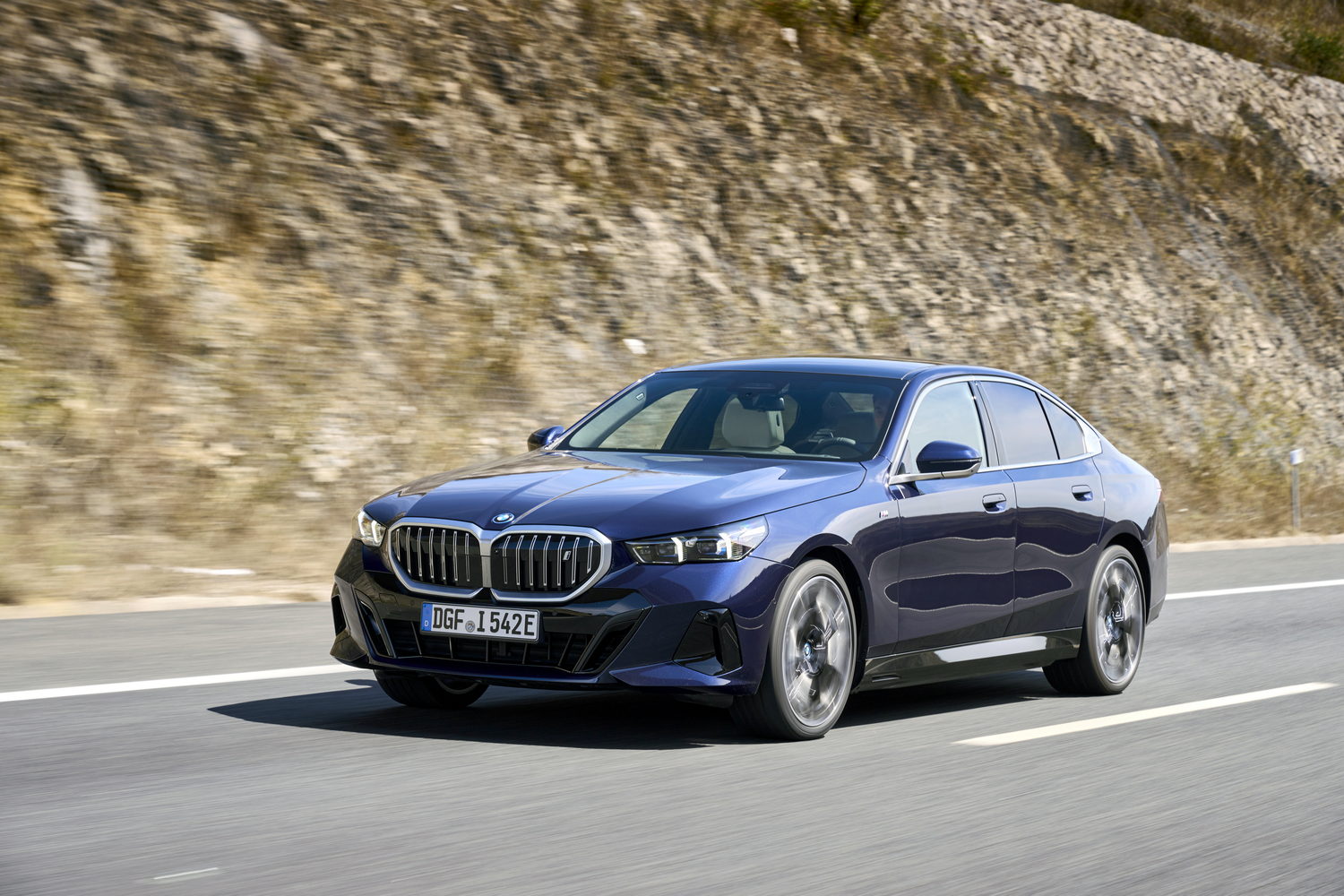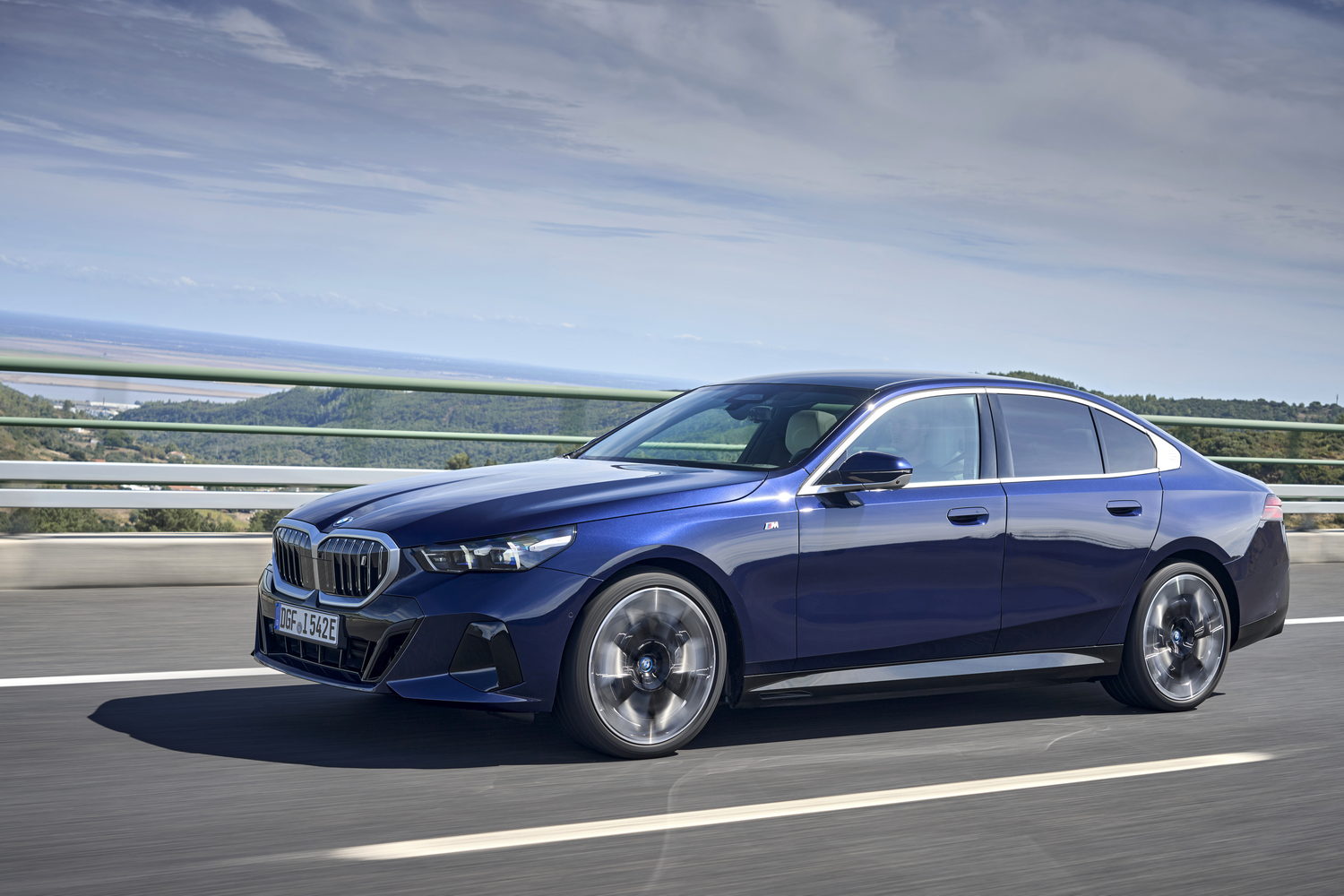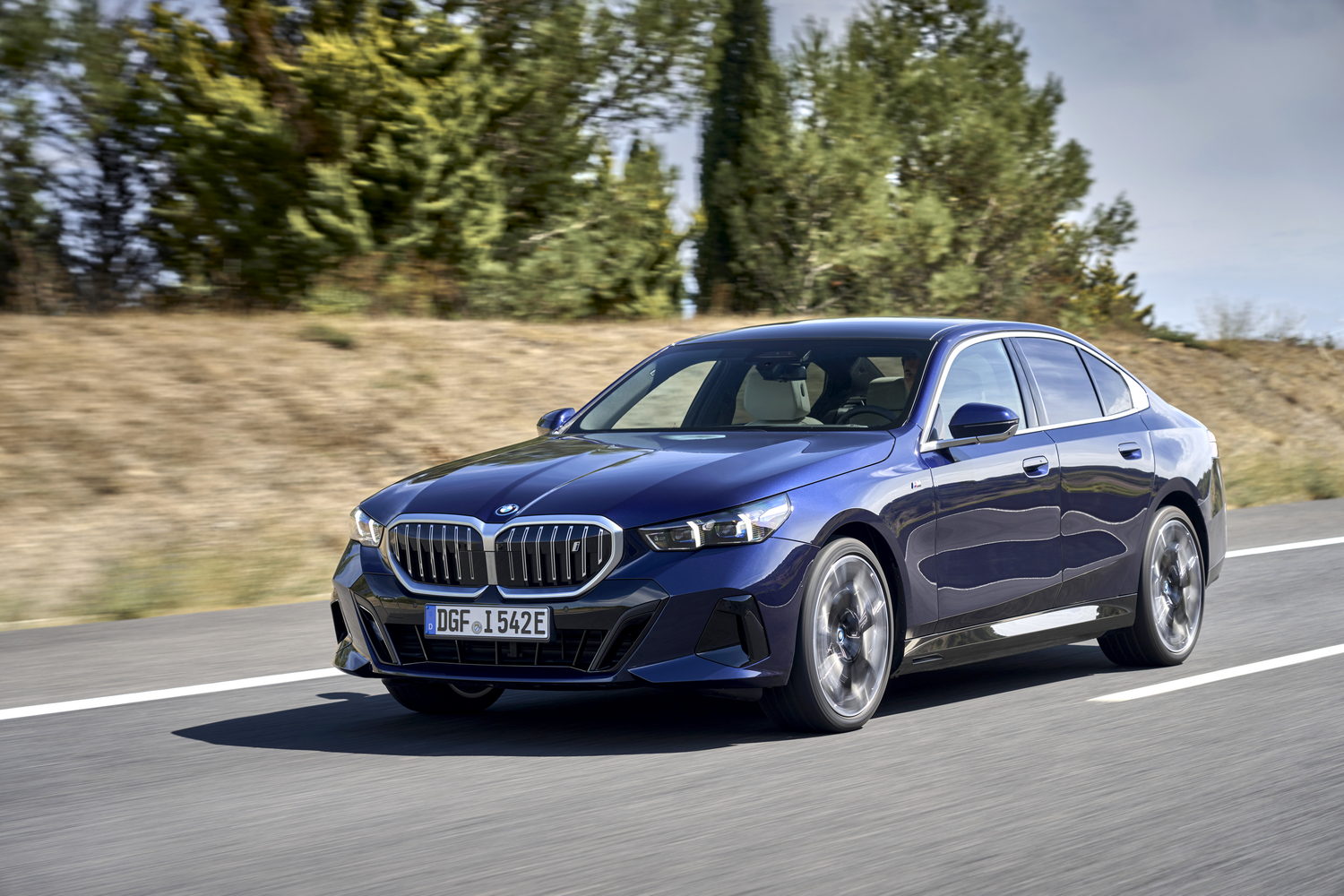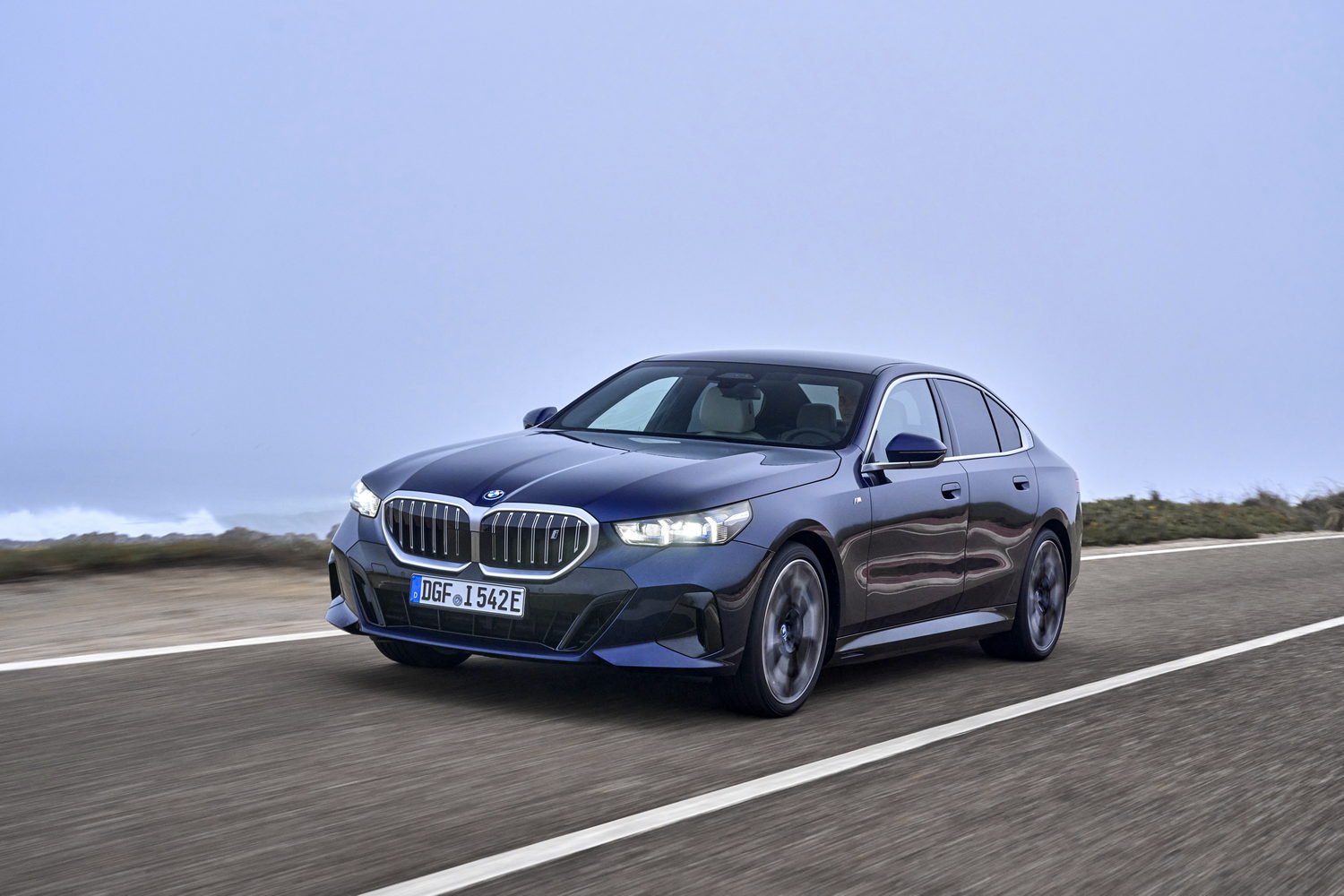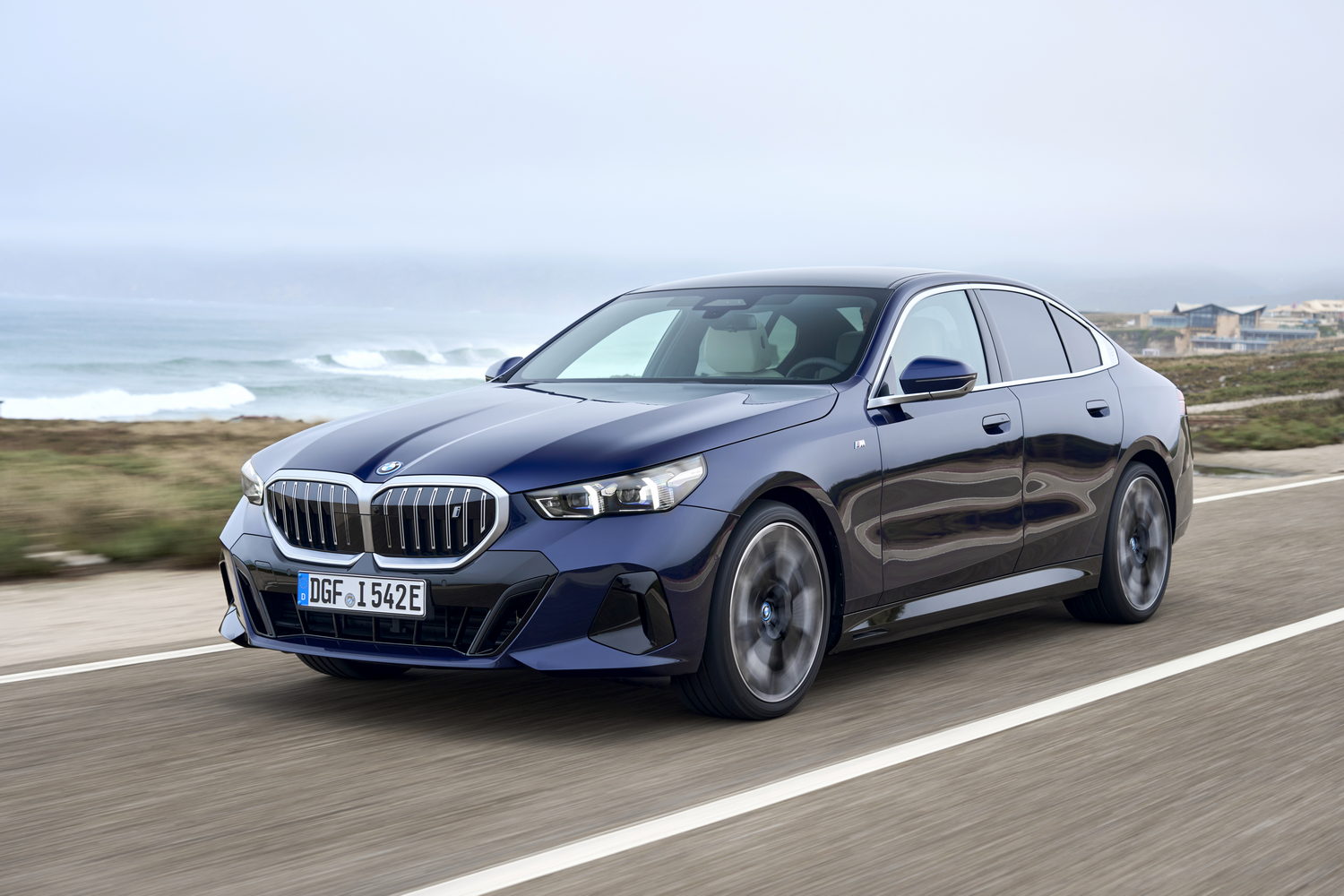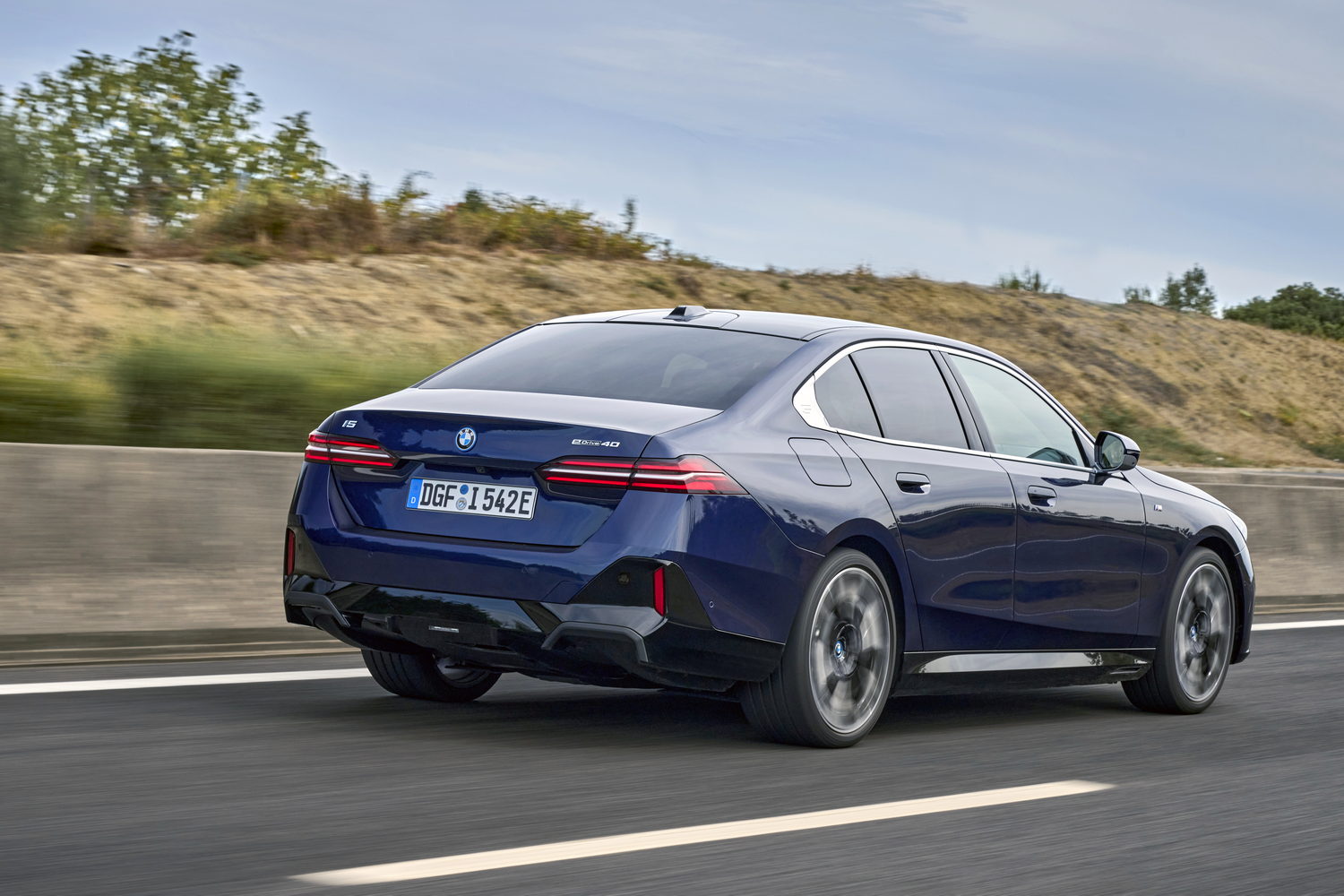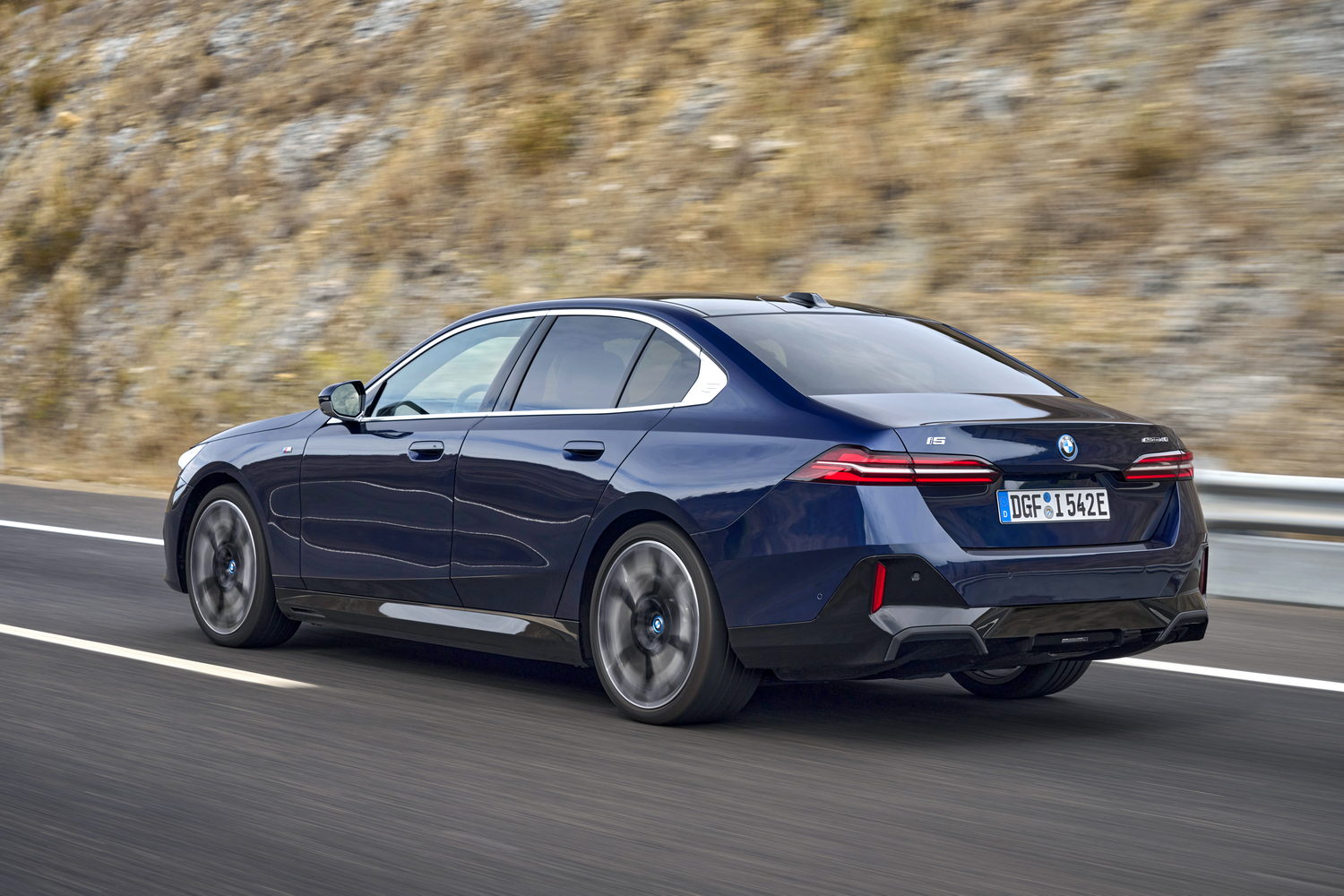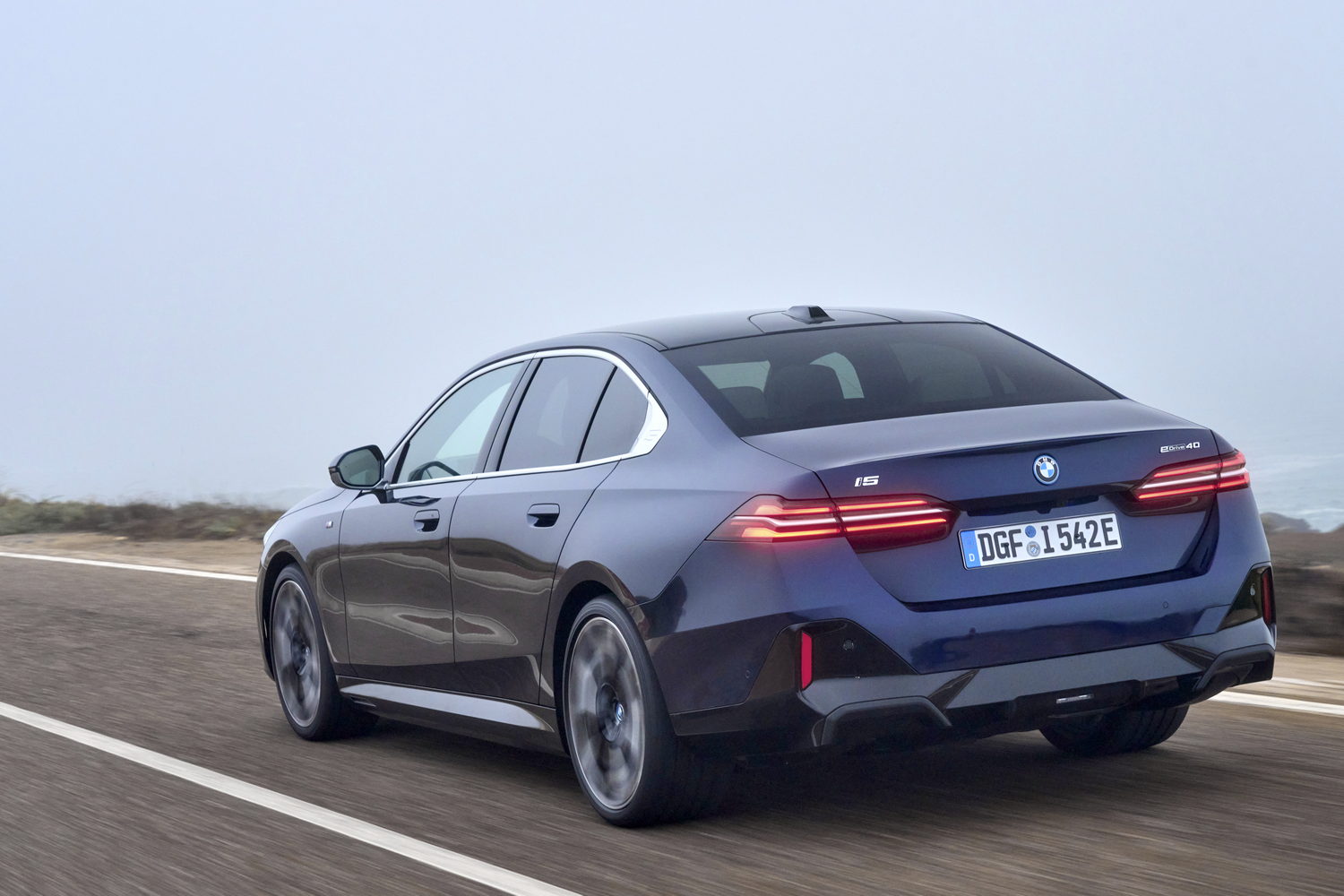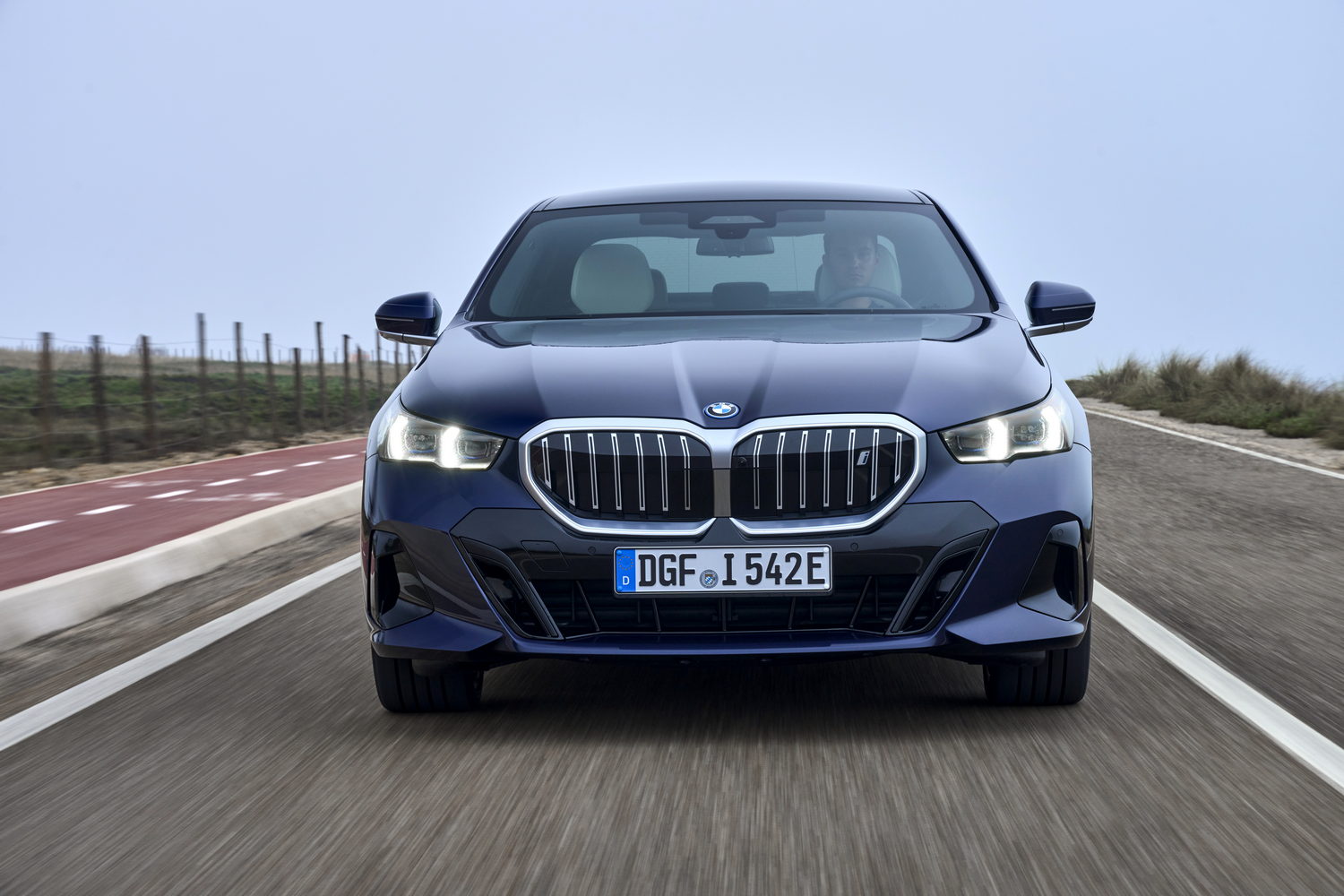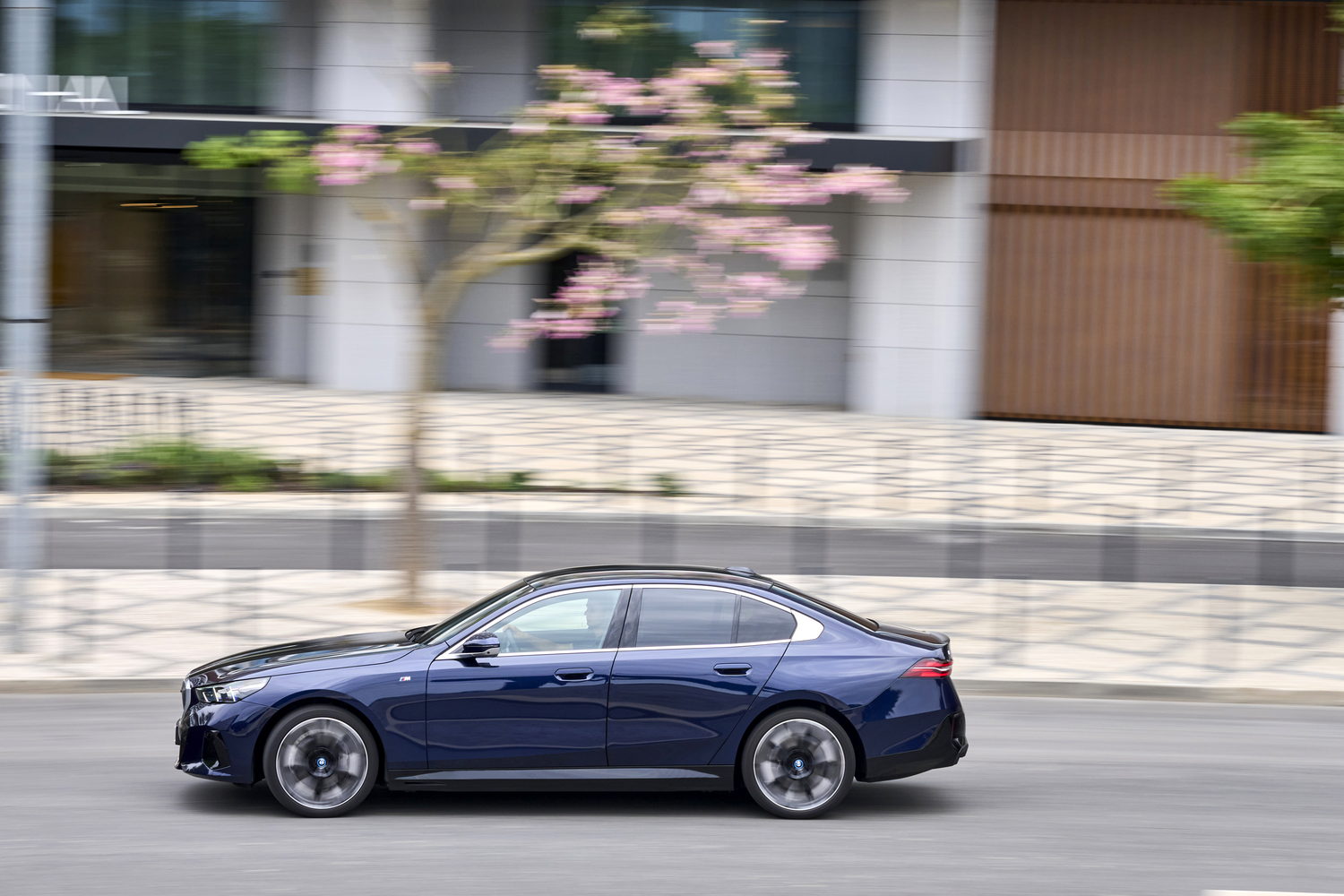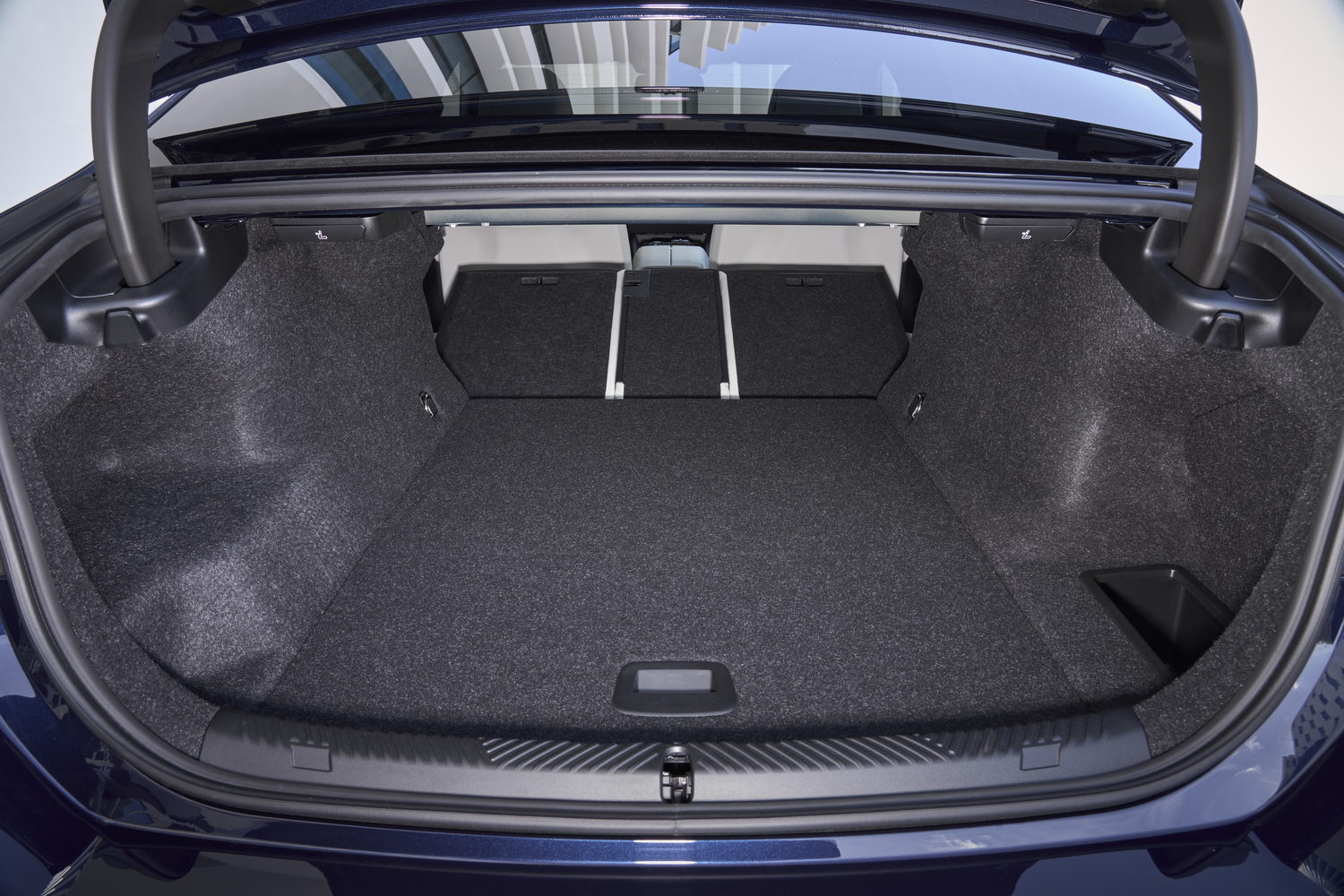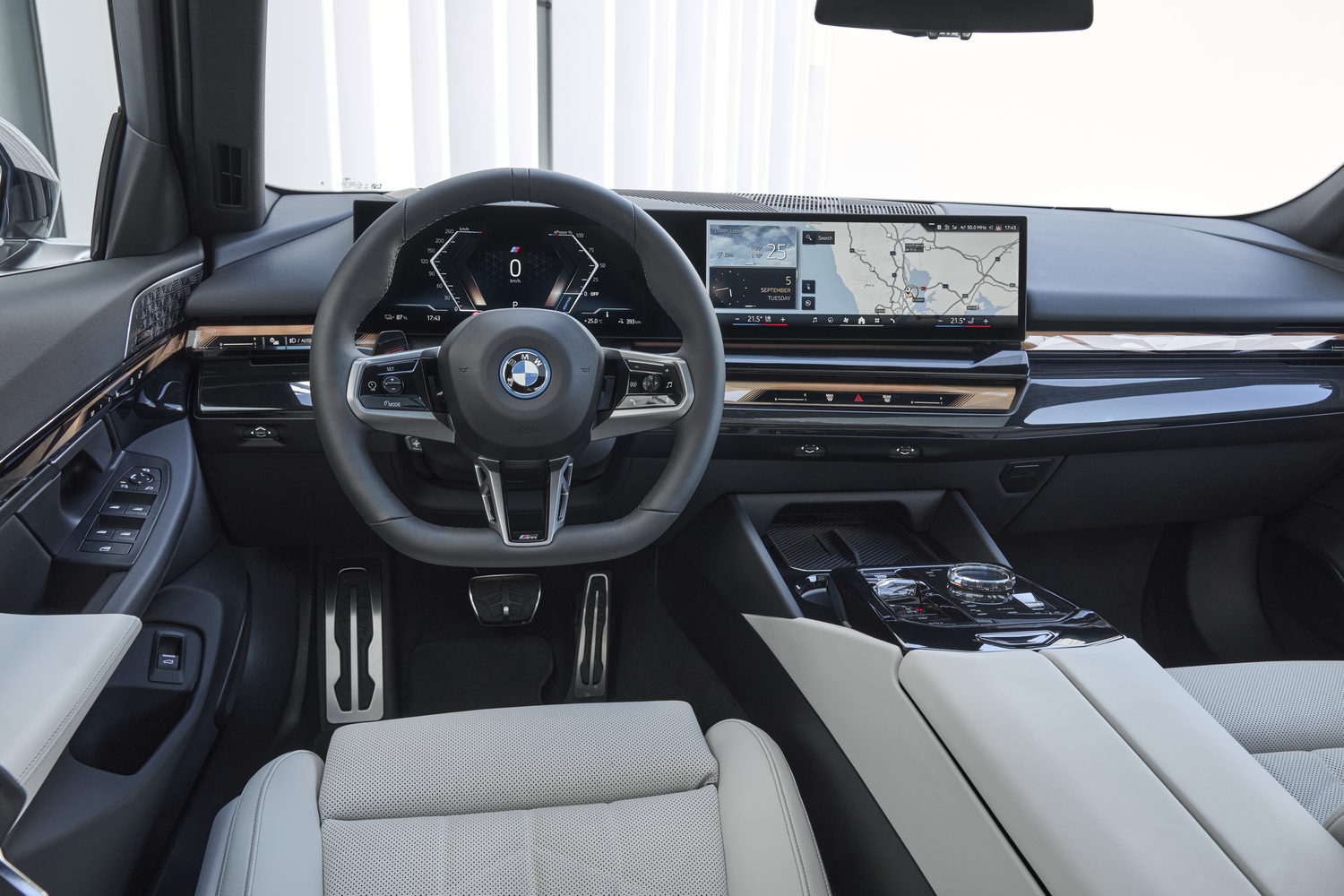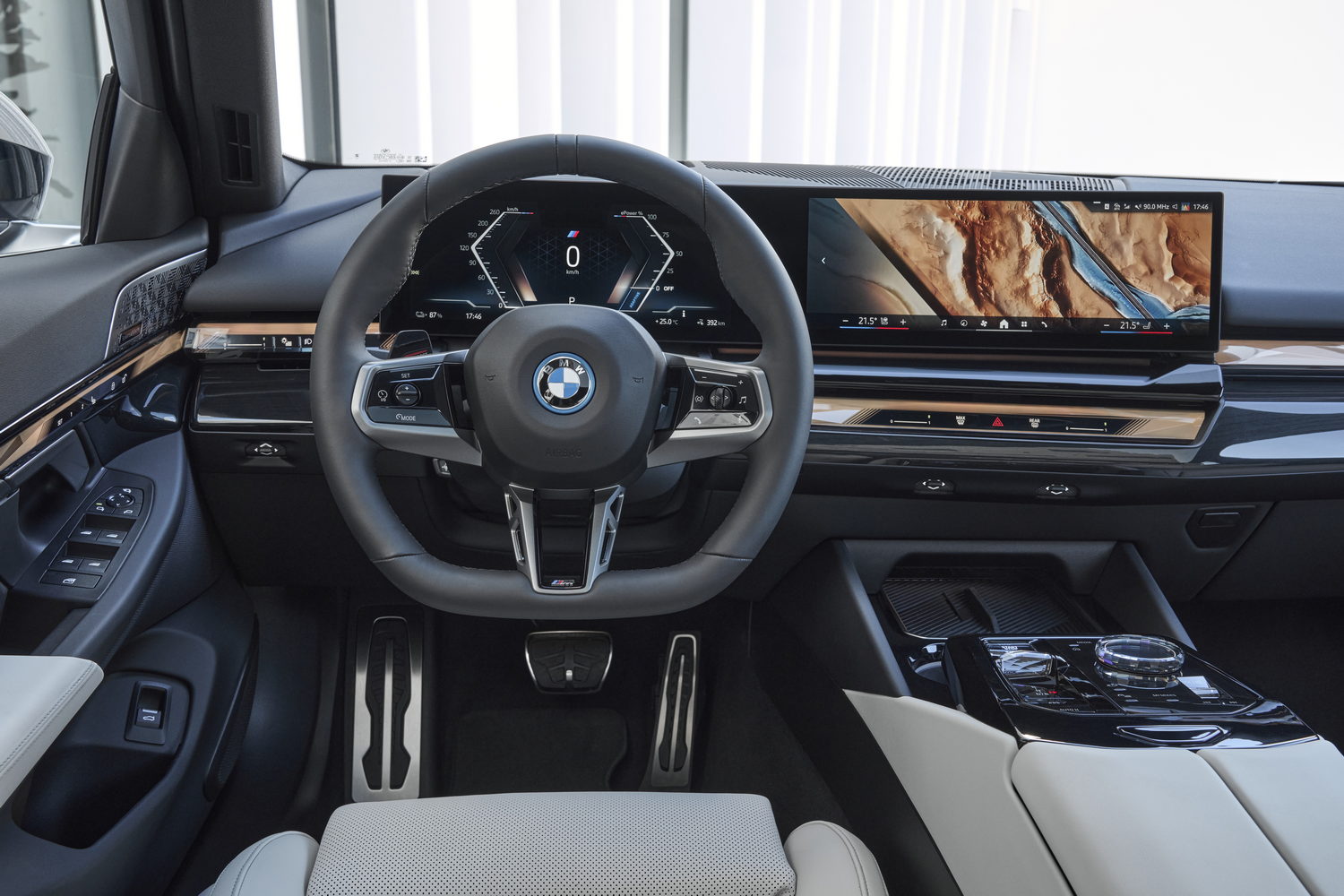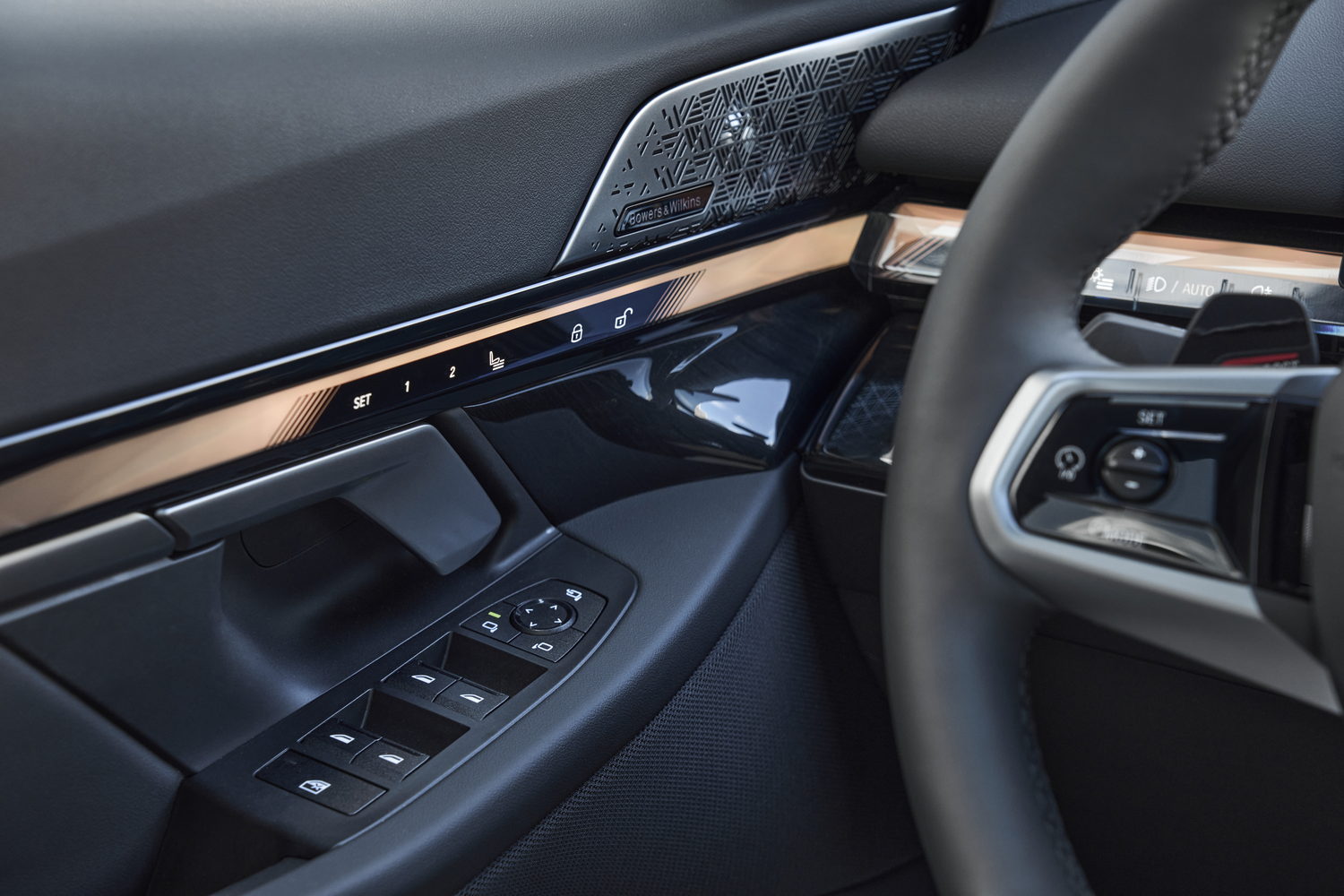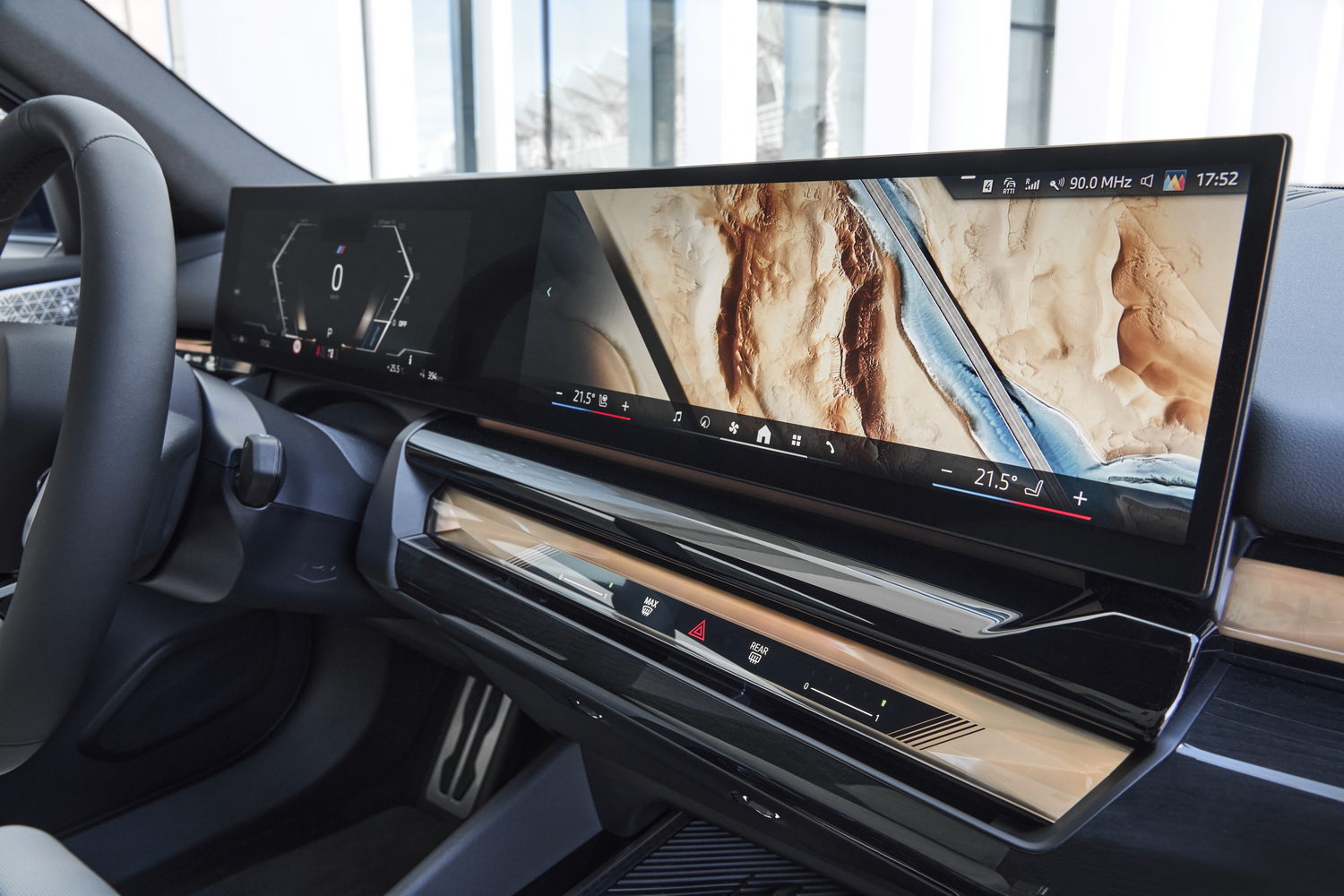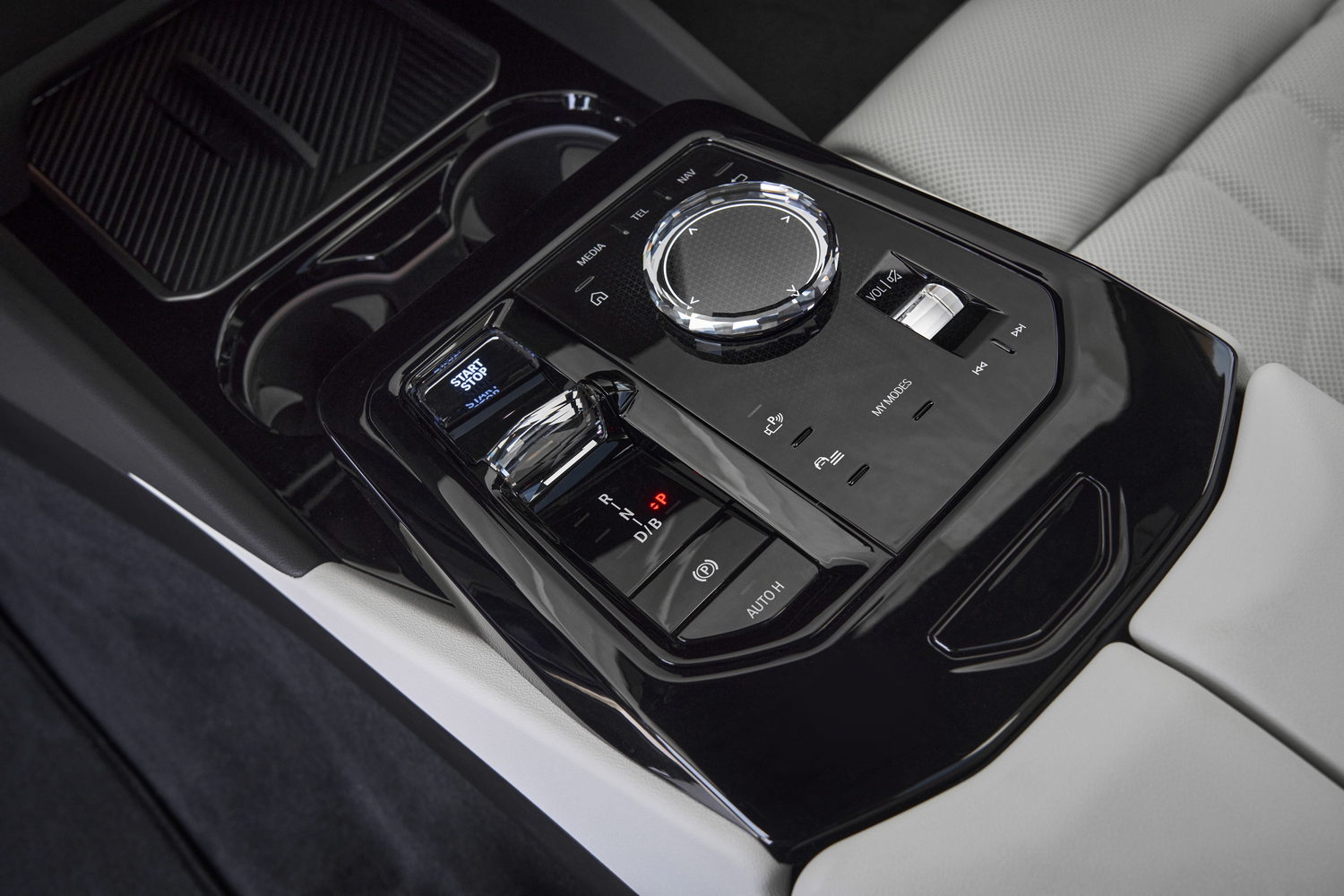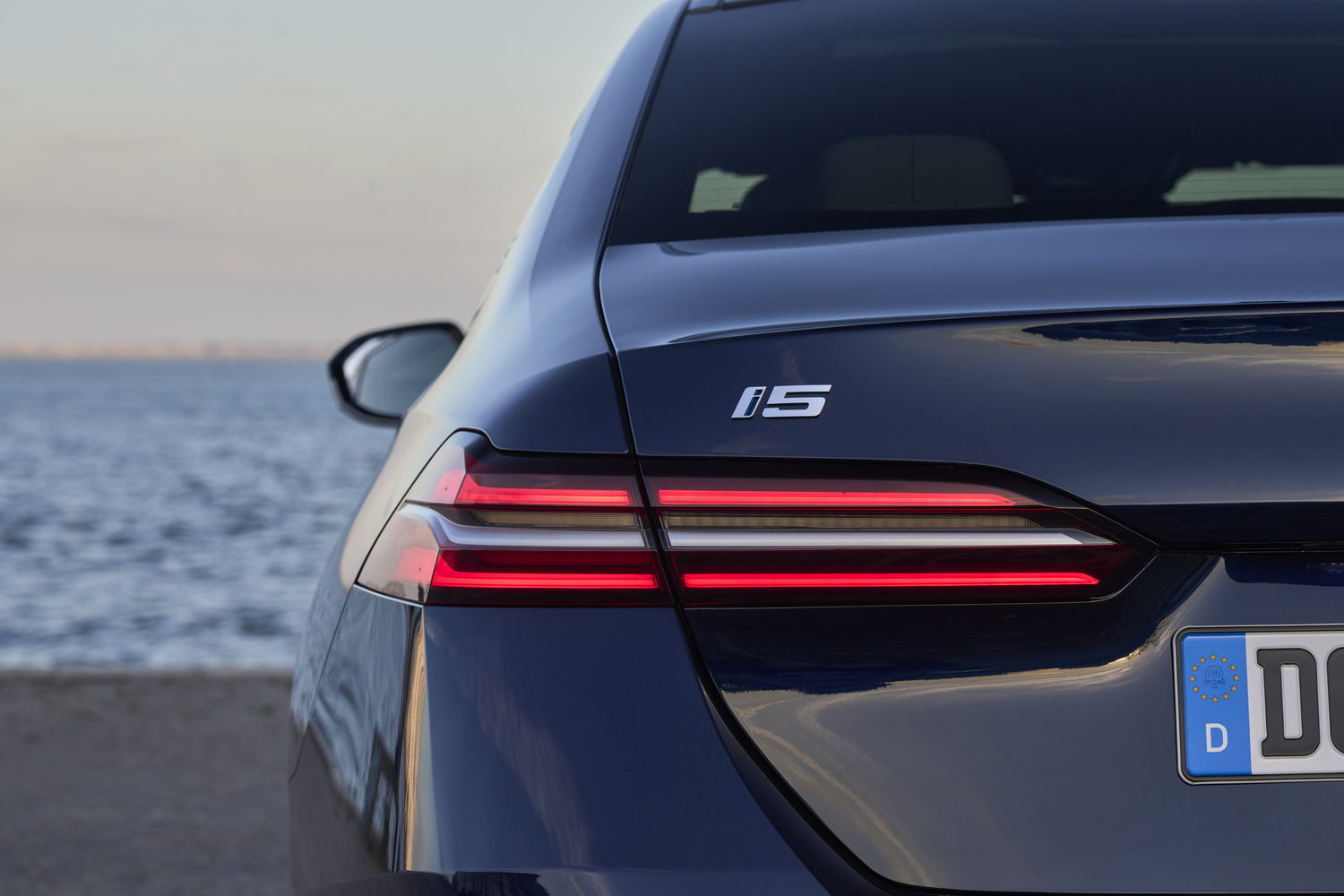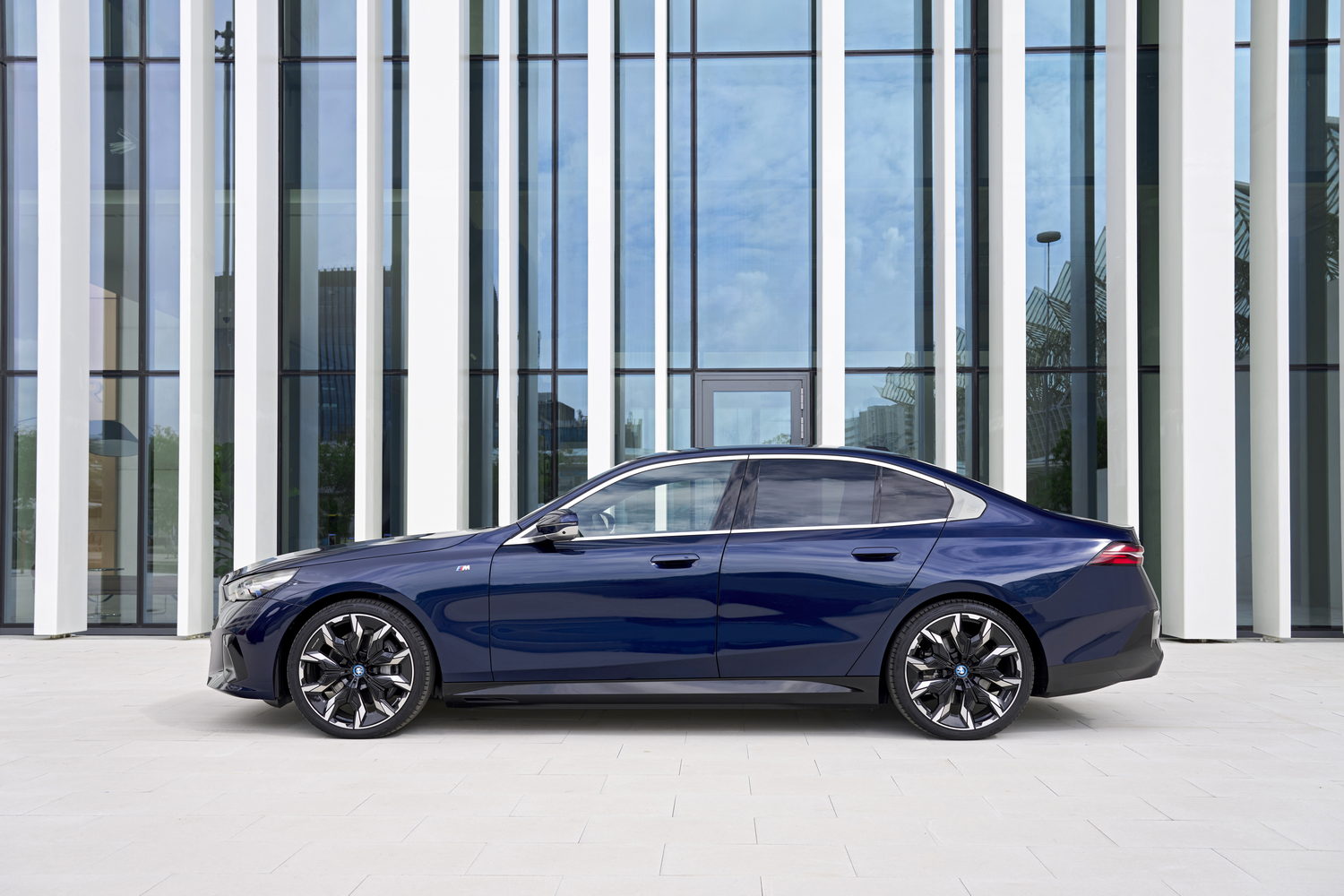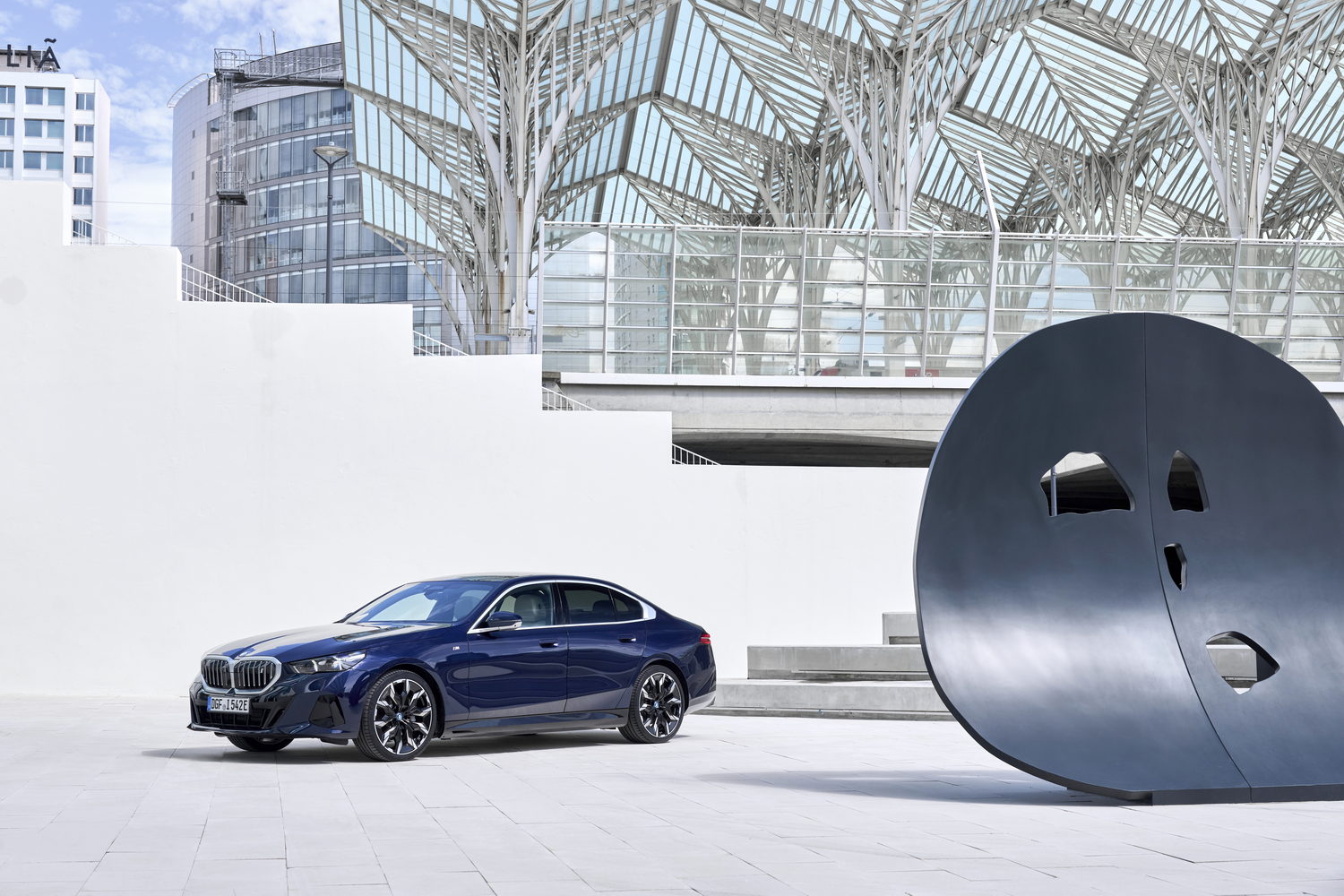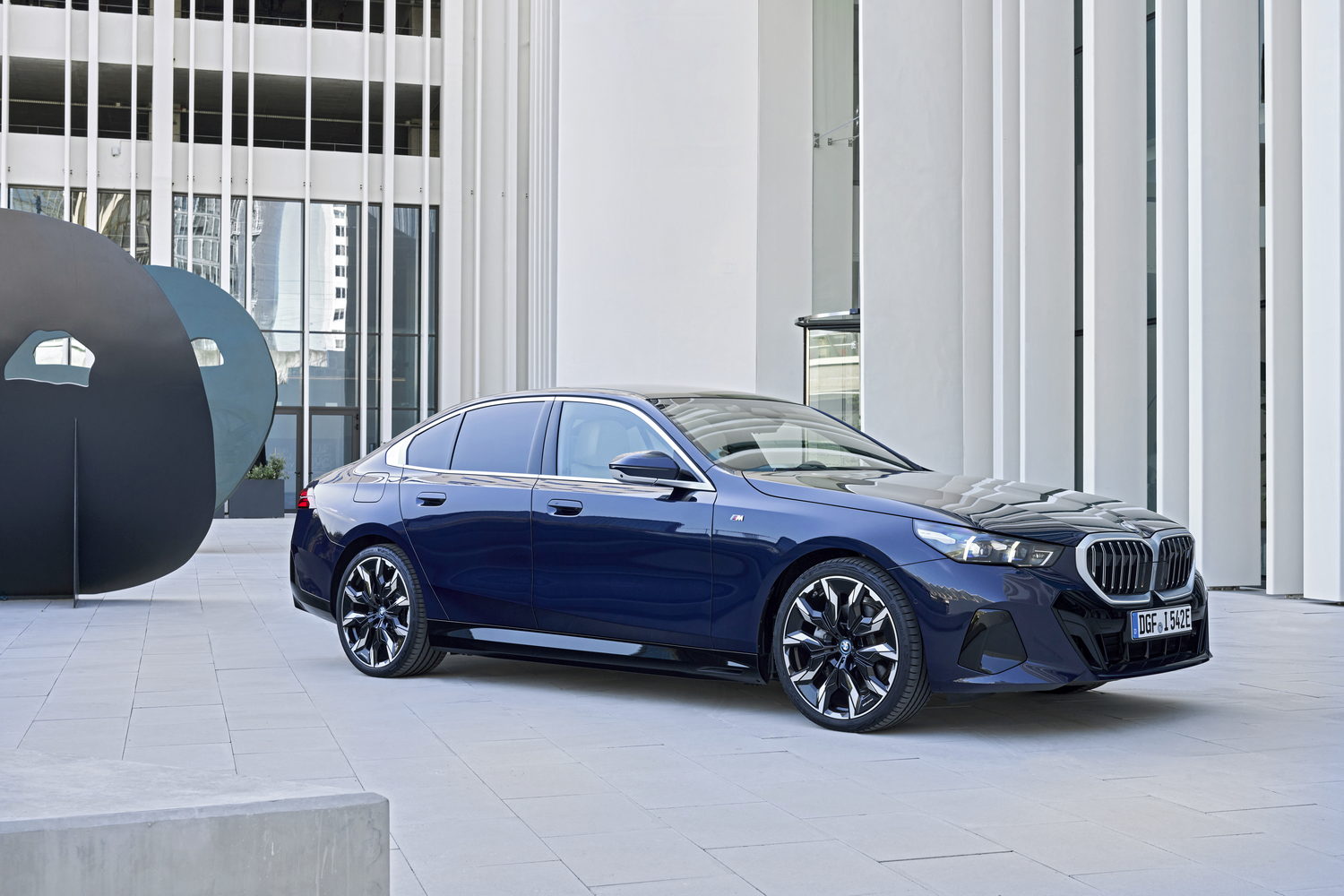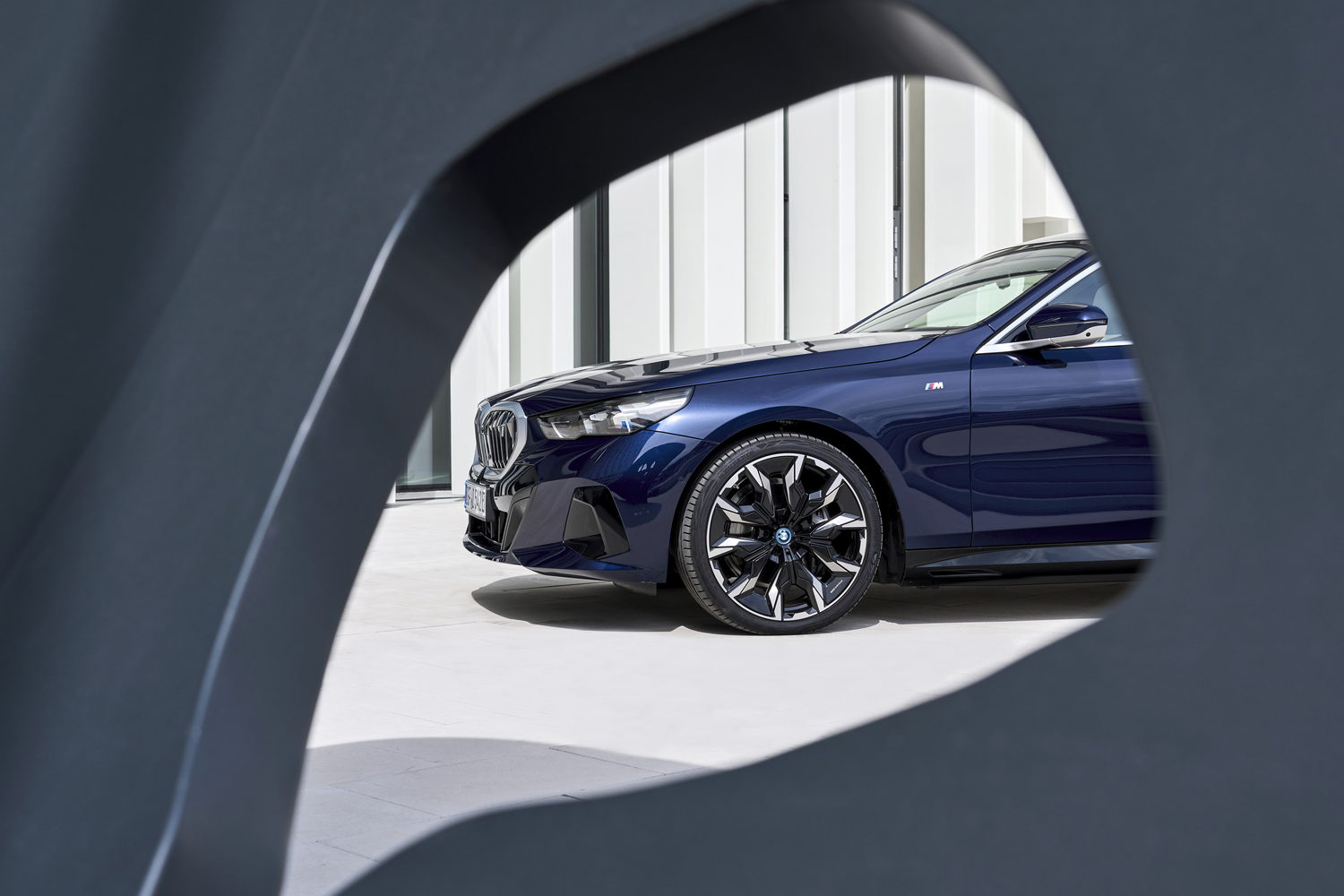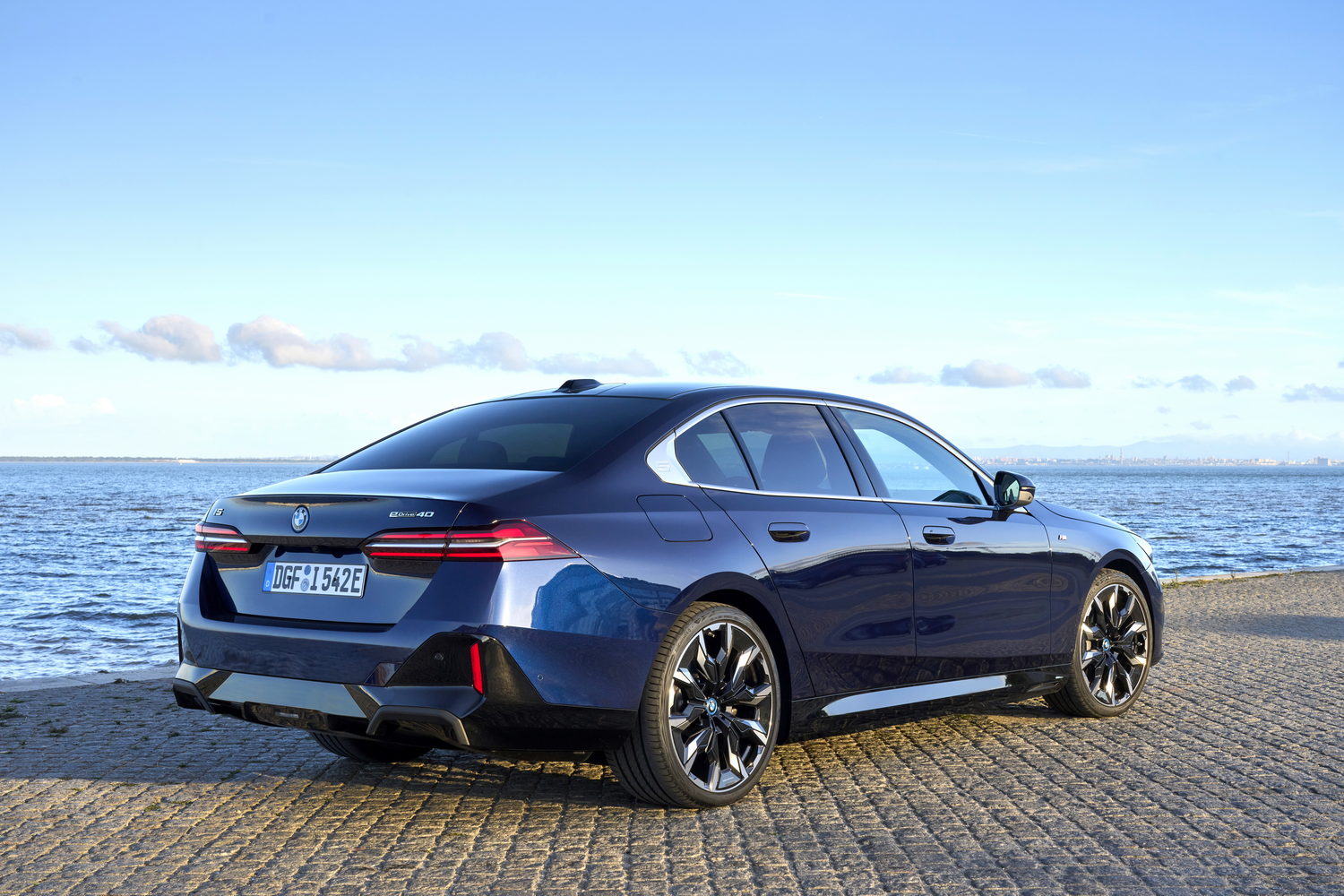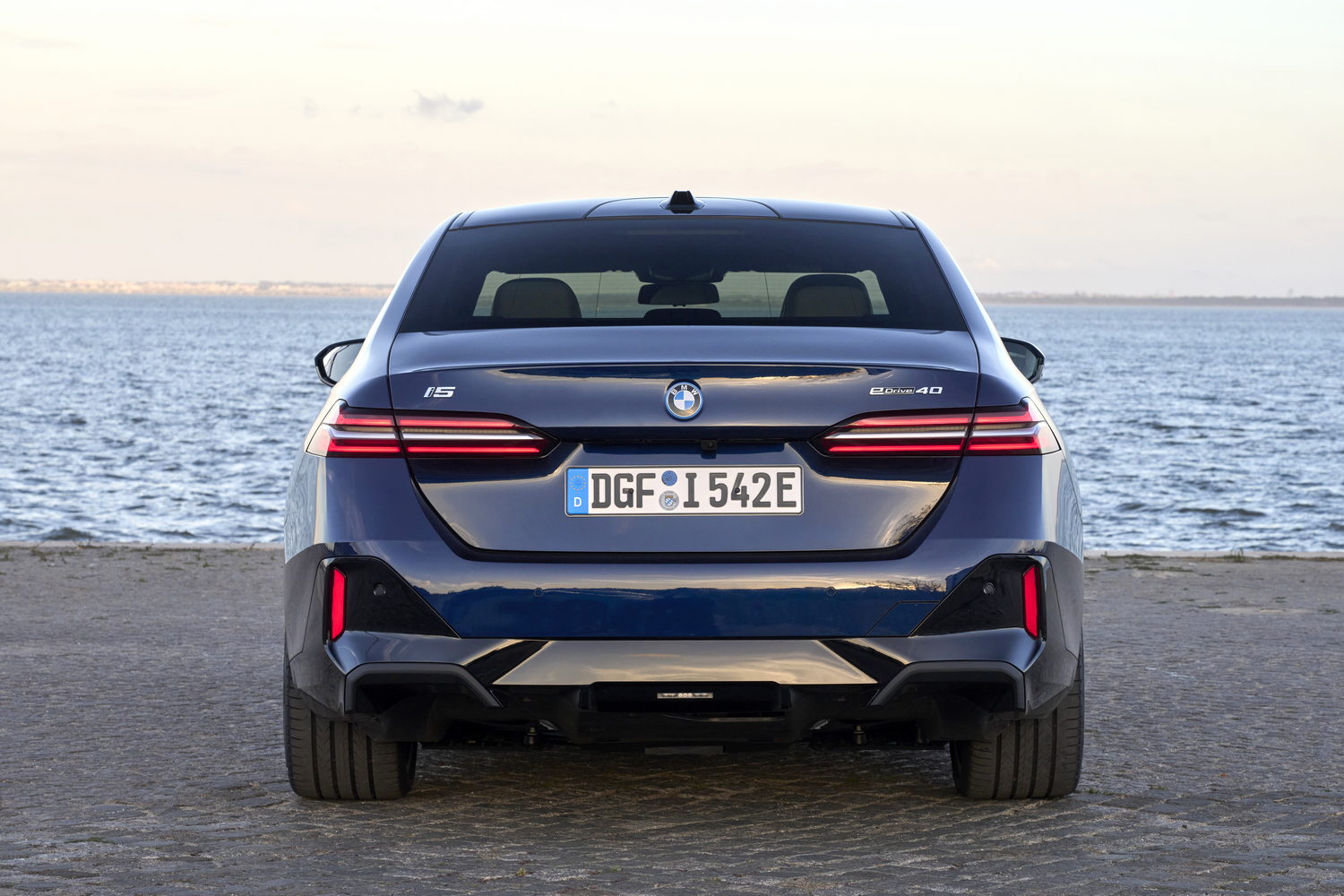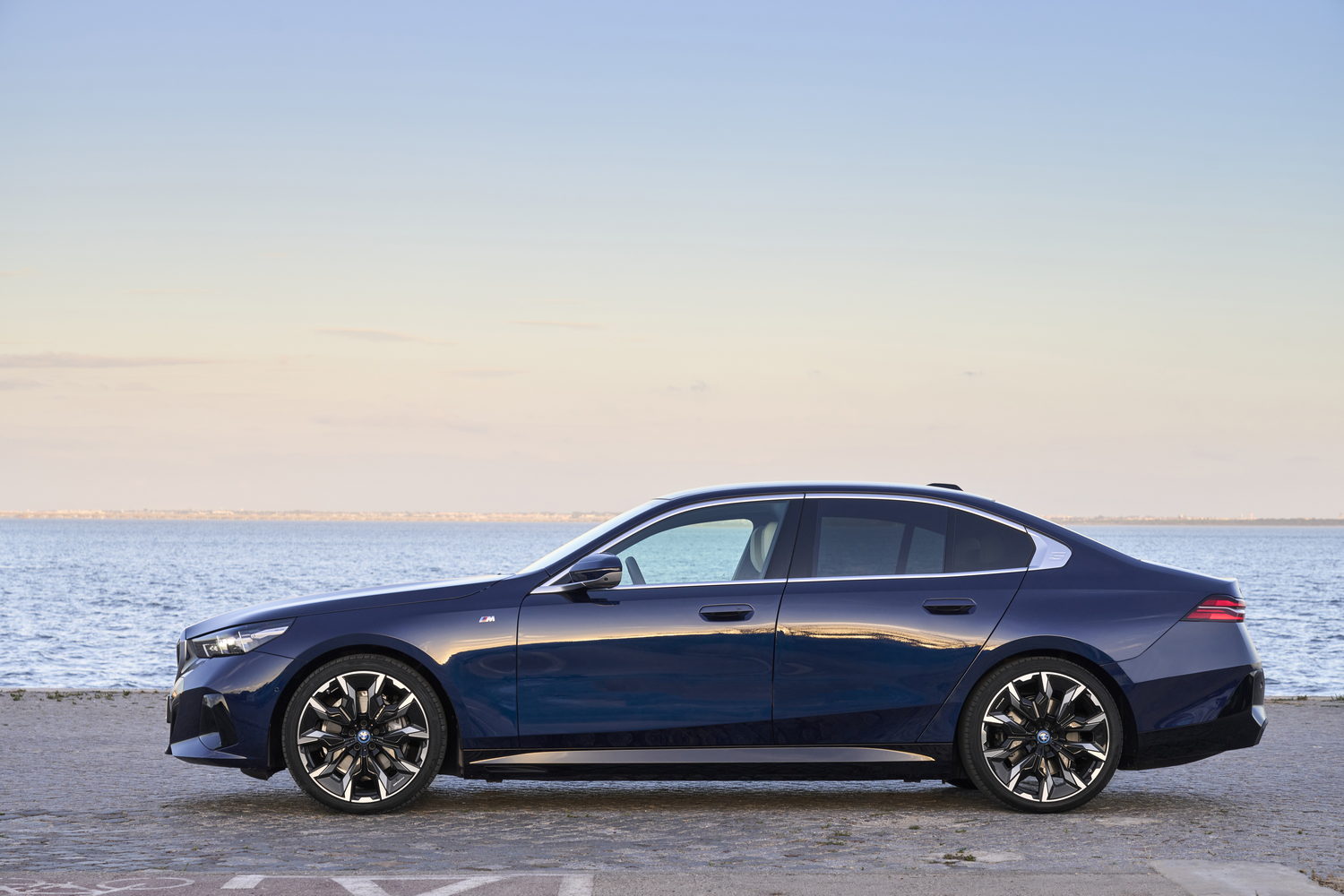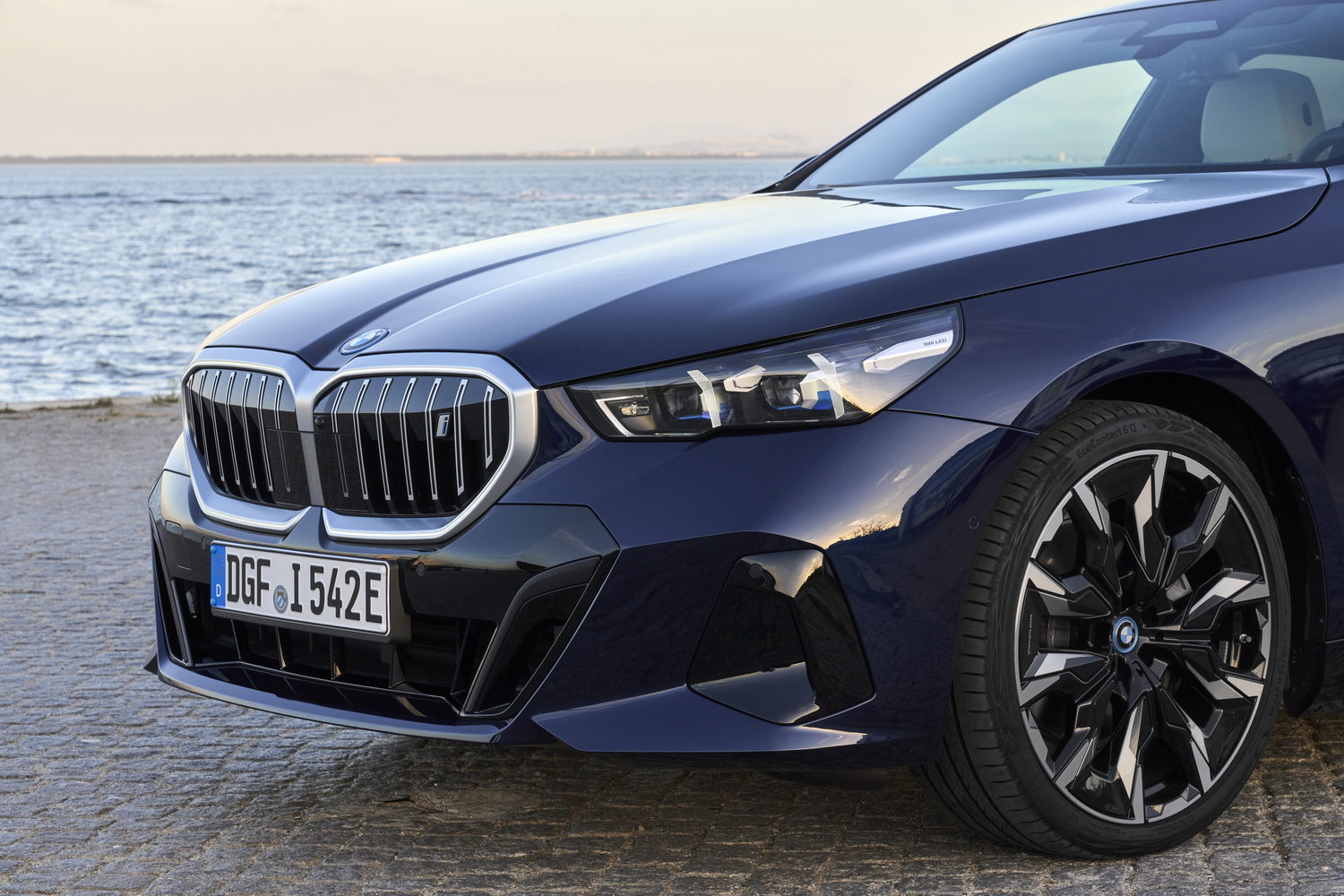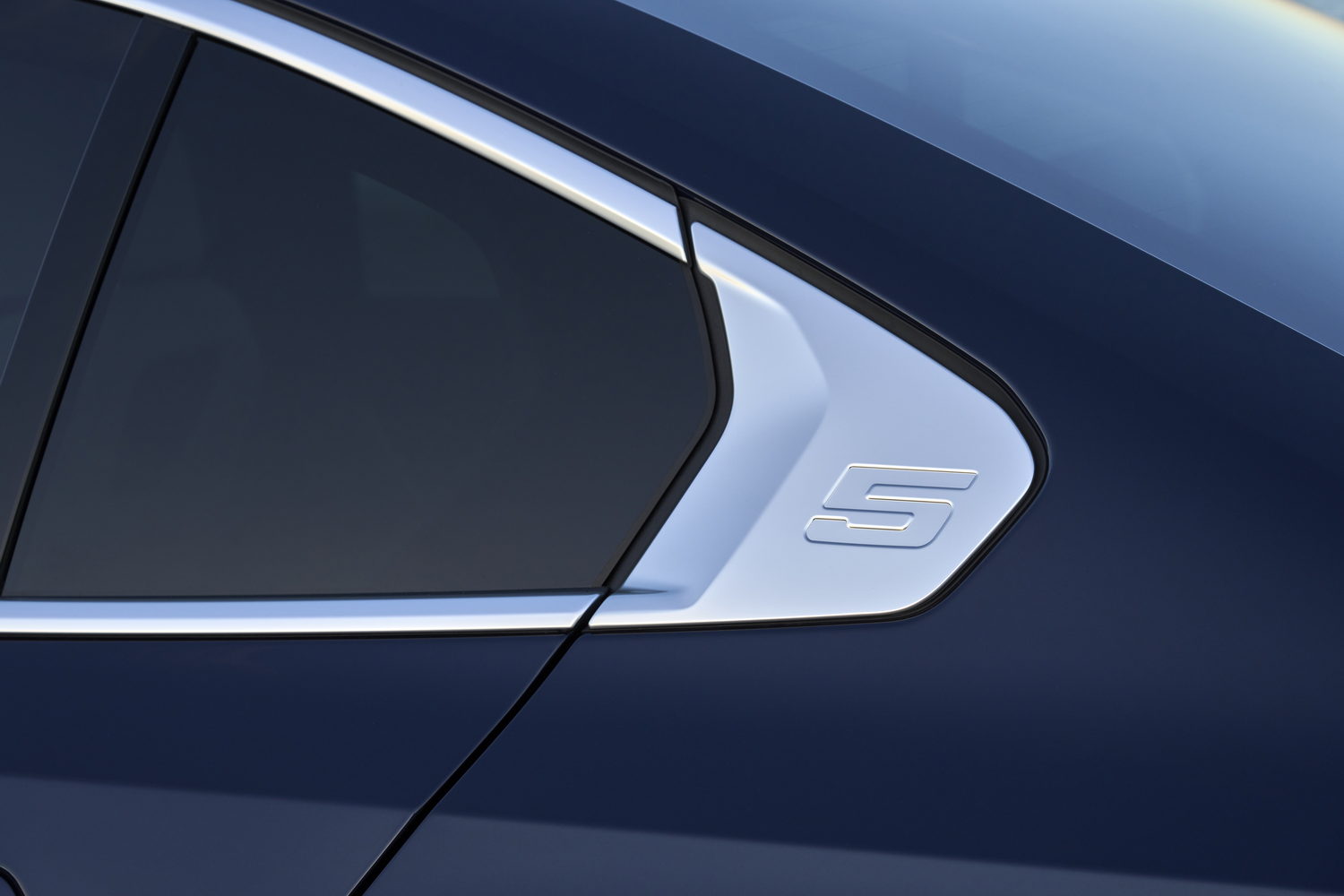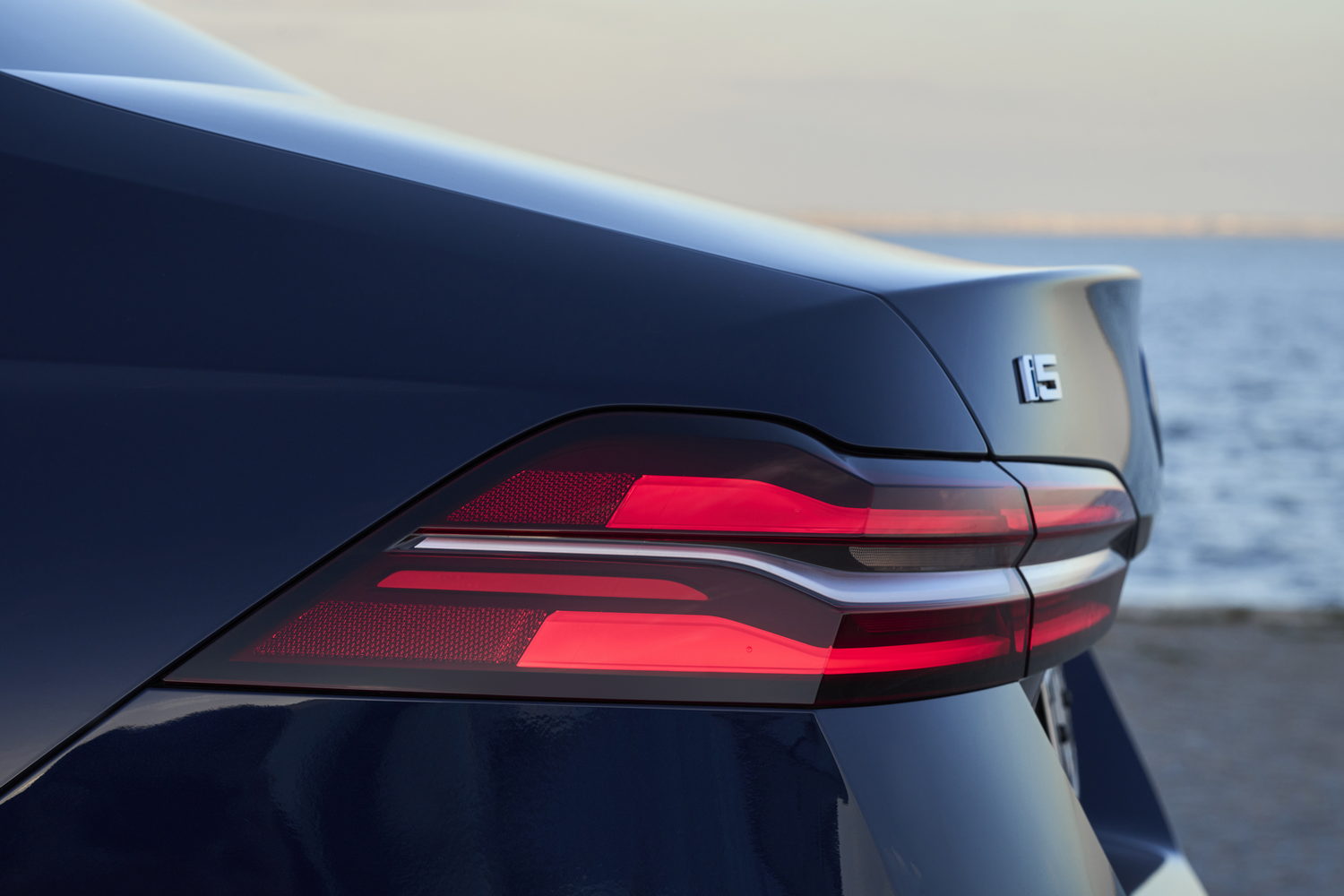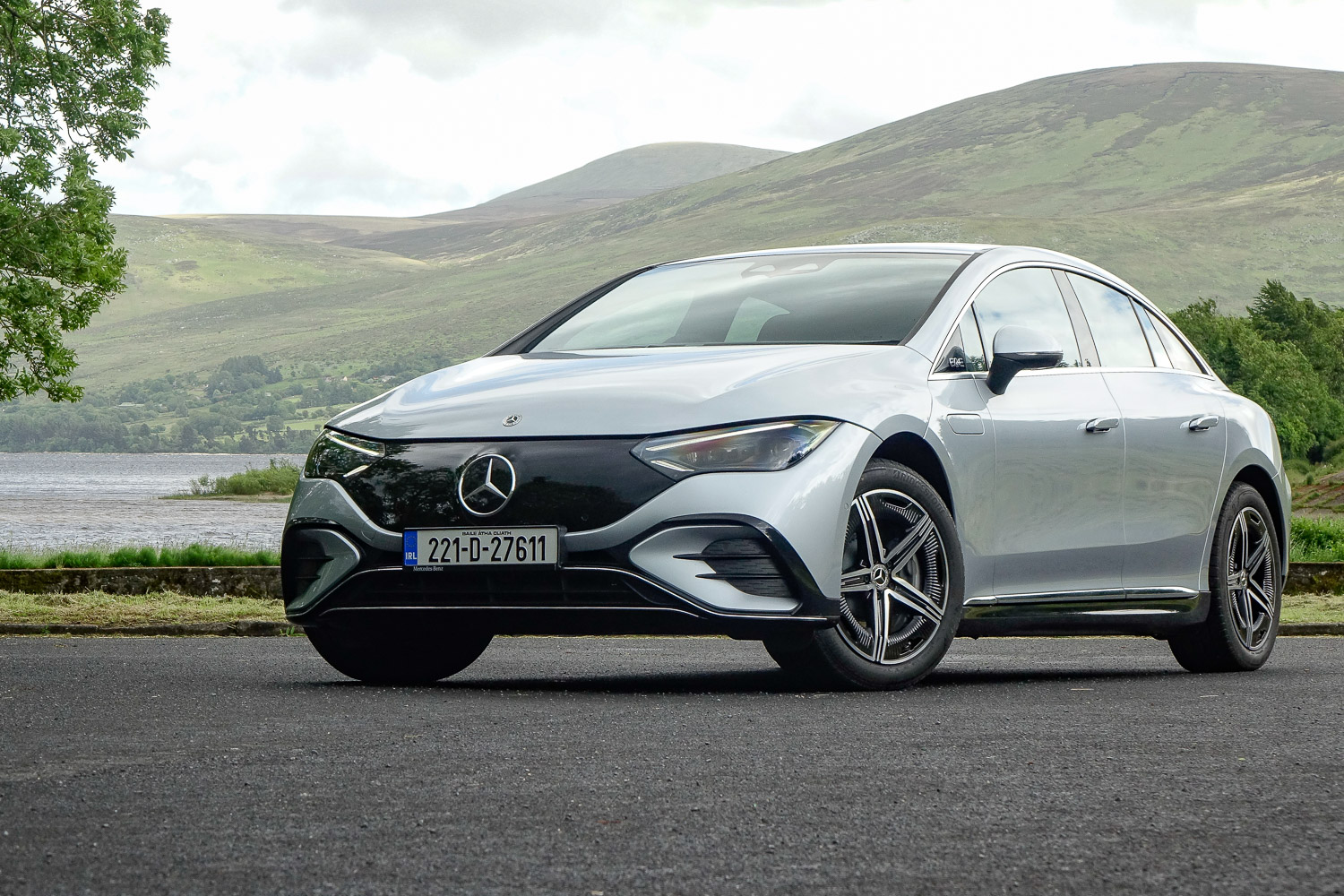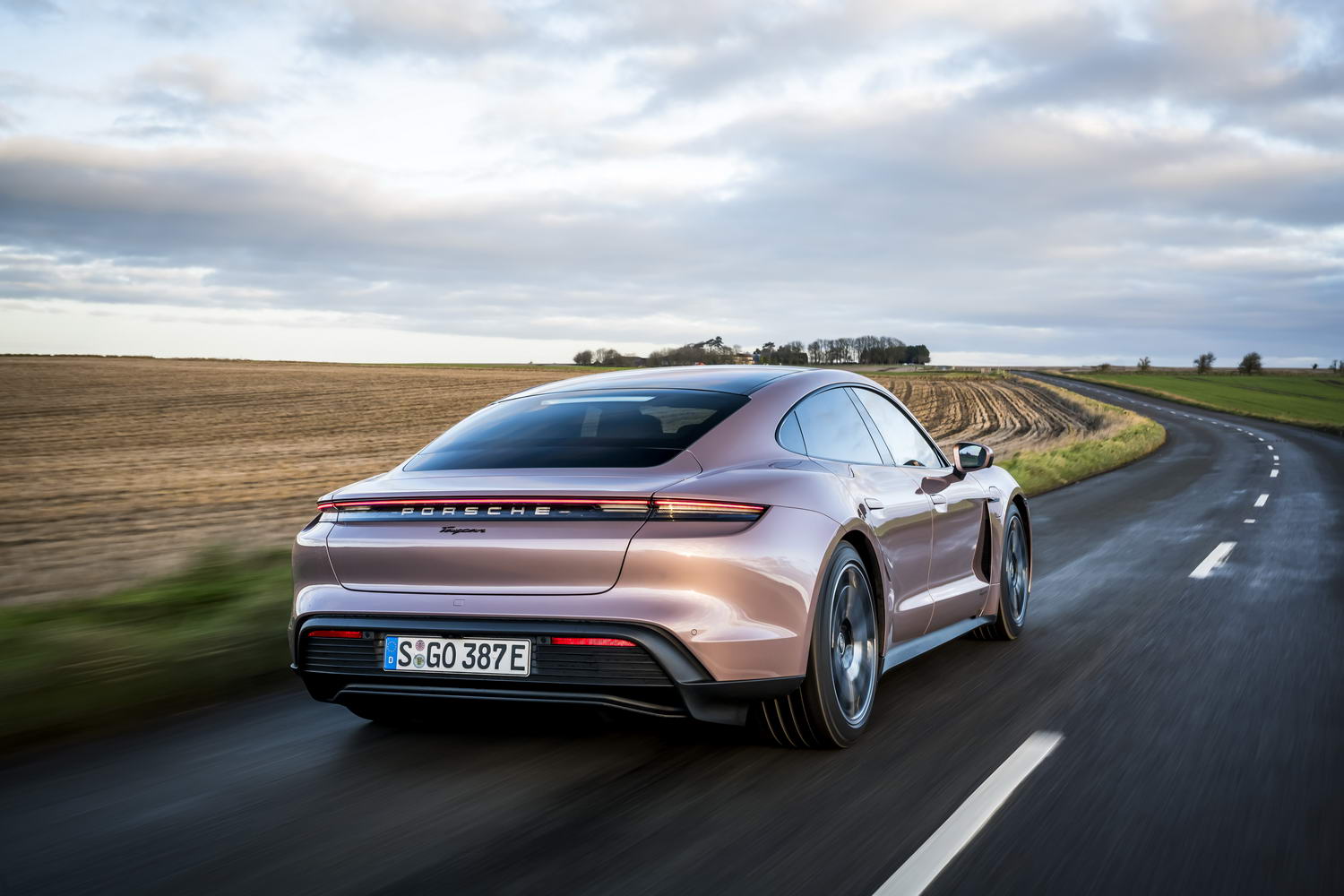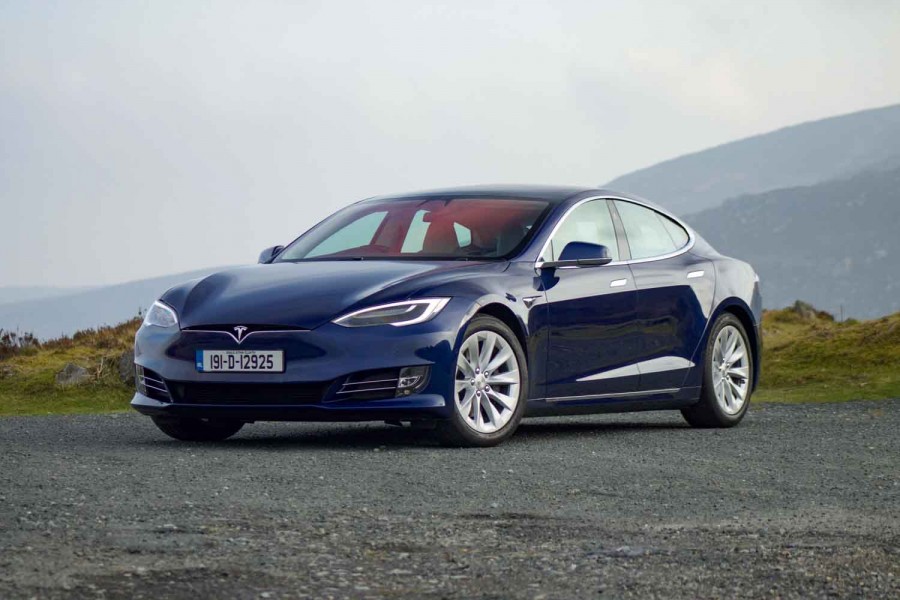Put simply, the i5 is a critical car for BMW. As well as being another electric option in the burgeoning BMW 'i' range, it's also the first version of the new 5 Series to launch, otherwise known as the arch-rival to the Audi A6 and Mercedes-Benz E-Class. So, will the new saloon prove as desirable as its predecessor, and will the i5 stack up against its rivals in this entry-level electric form?
In the metal
Given the enduring popularity of the outgoing 5 Series, it's no surprise to see the often-controversial BMW remain conservative with the new car's styling. An evolution of its predecessor's design language, rather than a total reimagination, the 5 Series is still easy on the eye, albeit in a smart, clean and understated way.
As before, it still has that German minimalism to it, but it's more modern than before thanks to a new kidney grille (that thankfully isn't enormous) and cleaner flanks that bring it bang up to date. There are new headlights, too, including optional lights around the grille, and BMW has fitted new L-shaped lights at the rear. In short, it's exactly how you imagine a new 5 Series to look.
Even the electric versions look pretty understated, with little to differentiate them from their combustion-powered siblings. Obviously, they have no exhaust outlets, which is the dead giveaway, but otherwise they aren't easy to spot. For some, that will be a black mark against the i5's name, but for others it will be a positive step.
The biggest makeover, then, is inside. Again, there isn't much difference between the different versions of the 5 Series internally, but they all get a very modern cabin inspired by that of the latest-generation 7 Series. This means you get a textured plastic band around the cabin that illuminates to provide ambient lighting, although exactly which colour it picks depends on the driver's preferences and the driving mode selected.
That's joined by a new-look dashboard that's almost devoid of buttons and that hides air vents in strange recesses, as well as a centre console inspired by other models in the modern BMW line-up. The company seems set on toggle-style drive selectors these days, but the iDrive rotary controller for the infotainment system has remained in situ.
Both those changes have been enabled by the inclusion of the Curved Display that houses the 14.9-inch touchscreen infotainment system and the 12.3-inch digital instrument display. They're both massive screens, but they live in one stylish housing that spans most of the dashboard's width. The housing itself is not the news story - we've seen it in countless other BMW models of late - but it does include BMW's latest operating system technology.
With more functions and a customisable home screen that shows navigation displays by default, it's a clear and slick system that has been very ably refined. What's more, customers can now choose to buy the AirConsole upgrade, which allows you to use the system as a games console when the car is stopped. BMW says the system, which lets players use smartphones as controllers, is designed for use when whiling away the hours spent charging the car.
BMW has also refined the system's climate control panel, which has allowed the company to remove conventional heater and ventilation switchgear from the dash. It's great from a design and cost point of view, but it still isn't as ergonomic as buttons and dials. Now, though, it is at least faster and more intuitive to use, with the system permanently accessible via a taskbar at the foot of the display. It's easily one of the best touchscreen heater control systems on the market, although some would say that's a pretty low bar.
As well as focusing on technology, BMW also has a reputation to uphold when it comes to quality, and though the brand has clearly worked hard to make the 5 Series feel more modern, it doesn't necessarily feel more upmarket. There's a heavy reliance on glossy plastic, which doesn't exactly feel cheap, but it doesn't feel especially premium either. Combine that with some slightly disappointing window switchgear and it feels as though BMW hasn't really taken any steps forward in terms of quality. That said, it's still well engineered and seemingly pretty robust, so we can't complain too much.
And strides have been made in some areas, because the new 5 Series is the first BMW to get a fully 'vegan' interior as standard. The seats, dashboard and steering wheel are all trimmed in Veganza leather - the first leather alternative to meet BMW's standards for steering wheel trim - although customers can choose the real thing if they so wish.
Either way, the 5 Series will be more than capable of seating drivers and passengers alike in perfect comfort. Sports seats are fitted in the front as standard, but comfort seats can be specified as an option for an even more relaxing feel. Space is more than ample, with plenty of legroom in the back and more than enough headroom no matter where you sit. Even tall rear-seat passengers will be perfectly comfortable.
And there will be adequate luggage space, too. At 490 litres, the boot capacity of the i5 is more competitive than that of the Mercedes EQE saloon, but it's still 30 litres down on the petrol-powered BMW 520i, which offers a neat 520 litres of cargo capacity. The forthcoming i5 Touring estate version will offer even more space if it's needed.
Driving it
For the time being the eDrive40 version of the BMW i5 is the cheapest one on the books, but even this isn't shy of horsepower. The sole electric motor, which drives the rear wheels alone, produces 340hp - enough for a 0-62mph time of six seconds flat. It's the kind of power and performance you expect from a 5 Series with a turbocharged 3.0-litre engine.
Naturally, though, the i5 is much more efficient than that would be. That's mainly because it has an 81.2kWh battery under the floor, giving it sufficient range without making it too heavy. At least in theory. According to the official economy test, it does the trick, and the i5 eDrive40 should be capable of considerably more than 500km on a single charge (depending on specification). In practice, that might not be so easy, but we would certainly expect to see over 400km on a gentle motorway cruise and perhaps a bit more on a mixture of roads.
For most journeys, then, the i5 is going to have plenty of range, particularly if you top the battery up before you set off. Assuming you have an 11kW charger handy, BMW says it'll take eight-and-a-quarter hours to charge, but with 205kW DC charging capacity, it'll get from 10-80 per cent in half an hour, as long as you can find a charging point with enough oomph. If you don't have half an hour, it'll add 156km of official range (let's call it 100 or so, shall we?) in just 10 minutes.
Aside from the electric stuff, the i5 handles exactly as you'd expect from a new 5 Series. The four-door BMW has long been the most driver-friendly model in its class, and the new 5 Series looks set to carry on where its predecessor left off. Having only driven the electric saloon, we can't extrapolate our findings to all 5 Series models, but it's a good indication of how they will behave. And as a standalone product, the i5 more than stacks up in comparison to its rivals from Mercedes and Tesla.
Key to this is the steering, which is little short of fabulous, particularly in its sportiest setting. If we wanted to nit-pick, we might complain of a slightly rubbery feel in the more comfort-orientated modes, but it's precise and confident when you need it to be, giving you the ability to position the car exactly where you want. And while that ability can't exactly shrink the five-metre-long i5, it can at least ensure it doesn't feel unwieldy, even on a narrow and winding mountain pass.
That steering precision is also assisted by the suspension, which does more than just keep the wheels in contact with the road and iron out the bumps. Because of the way it's tuned - and presumably because of the way BMW has positioned the battery and motors low down in the i5's body shell - the saloon has exceptionally good body control no matter which mode it is in. Even in the less dynamically minded settings, it doesn't lean much in corners, and it doesn't pitch too much under braking either.
And it does that without damaging the ride comfort too much. The 5 Series has always been mature and composed, but it has never been the most comfortable executive saloon on the market, and the i5 is much the same. In its comfiest settings, it keeps most of the bumps at bay, but there's always some feel through the seat squab, whether you want it or not. On a motorway, for example, a Mercedes EQE will feel a bit softer and more luxurious, whereas the i5 has a slightly sportier edge without ever teetering on the brink of discomfort.
The fake engine noise, however, makes things slightly more uncomfortable. Ever since electric cars came to the market, manufacturers have been tussling with the noise issue, and BMW's solution is way wide of the mark. The noise is intrusive and weirdly bovine, which makes it sound as though the car is complaining about its treatment. However, the noise can be switched off, and it only comes in when you're accelerating hard. Ease off the accelerator and it calms down, leaving an incredibly quiet cabin even at remarkably high speeds.
More irritating is the new speed awareness system, which is now mandated by the safety busybodies and makes life in the i5 borderline infuriating. Stray over the speed limit by a tiny margin and the car will buzz at you, warning of your misdemeanour. Of course, some will say the solution to this is simply not to exceed the speed limit, but that assumes the car knows what the speed limit is. Yet the car's tech isn't sophisticated enough to deal with the complex road signs and layouts of the real world, and it gets things wrong all too often, before proceeding to complain about your decision to travel at what you know to be a perfectly legal speed. You can turn it off if you want, but you have to do it every single time you drive the car. In fairness, BMW isn't the only company struggling with this issue.
The biggest let-down of this eDrive40 model, though, is the braking system. The regenerative braking system is perfectly competent and generally quite smooth, but with that switched off the i5's pedal feels decidedly underpowered for a car that weighs well over two tonnes. As you approach a corner, the car seems to slow rather, well, slowly, and that doesn't do much for the heart rate. Perhaps the sensation is exacerbated by the speed with which the i5 gathers pace, and how easy it is to achieve surprisingly high speeds without noticing, but it's definitely a bit disconcerting when you're trying to enjoy the car's otherwise ample handling prowess. Thankfully, the brakes of the performance-orientated M60 xDrive model feel much more positive.
What you get for your money
The BMW i5 starts at just over €91,000 in Ireland, which is quite a bit more expensive than the €71,000 petrol-powered equivalent. And the forthcoming plug-in hybrid saloon is set to be even cheaper. That said, the i5 is quite a bit more powerful than the petrol version, even in 'basic' eDrive40 form, and it comes with lots of standard equipment. The entry-level M Sport model gets 19-inch alloy wheels, an M Sport leather steering wheel and leather-effect upholstery, as well as the standard Curved Display and climate control system, plus a Harman/Kardon sound system.
Summary
With no other versions of the new BMW 5 Series yet available to test, this is two first drives in one. Not only do we have to measure the i5 against other executive saloons, but it also has to compete with the handful of electric saloons on the market. Fortunately, only one conclusion is necessary to cover both fronts, because the new 5 Series is everything we hoped it would be. Well built, great to drive and very refined, it's a fantastic four-door executive saloon, and the fact that our test car just so happened to be electric feels like a bit of a non-issue. Yes, the safety tech and the brakes felt a bit underwhelming, but however you want to power it, the 5 Series seems destined to be up there with the best in its class.


